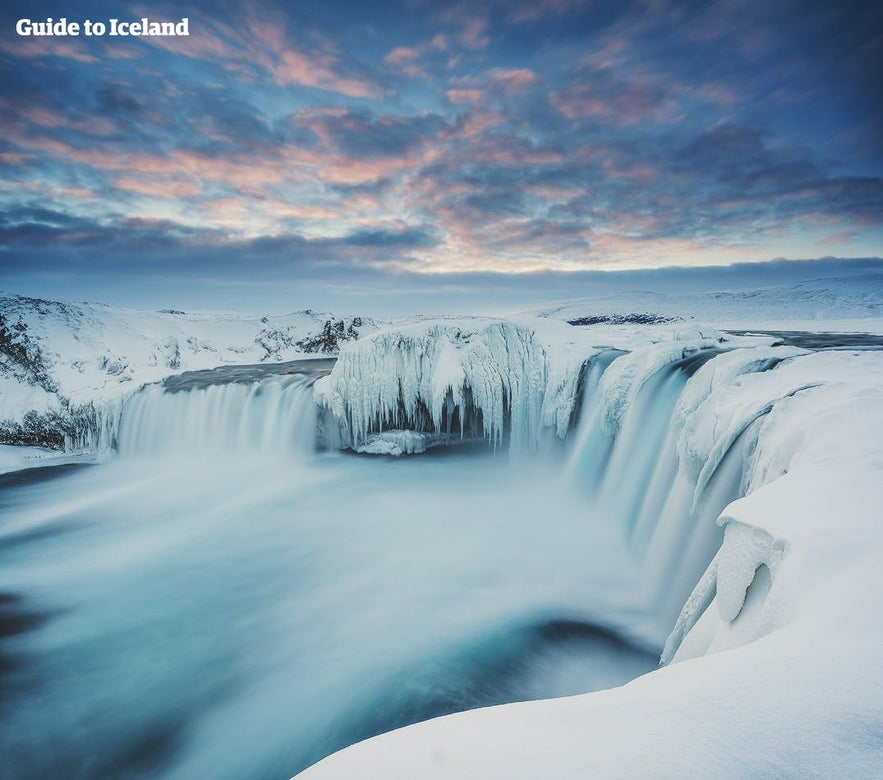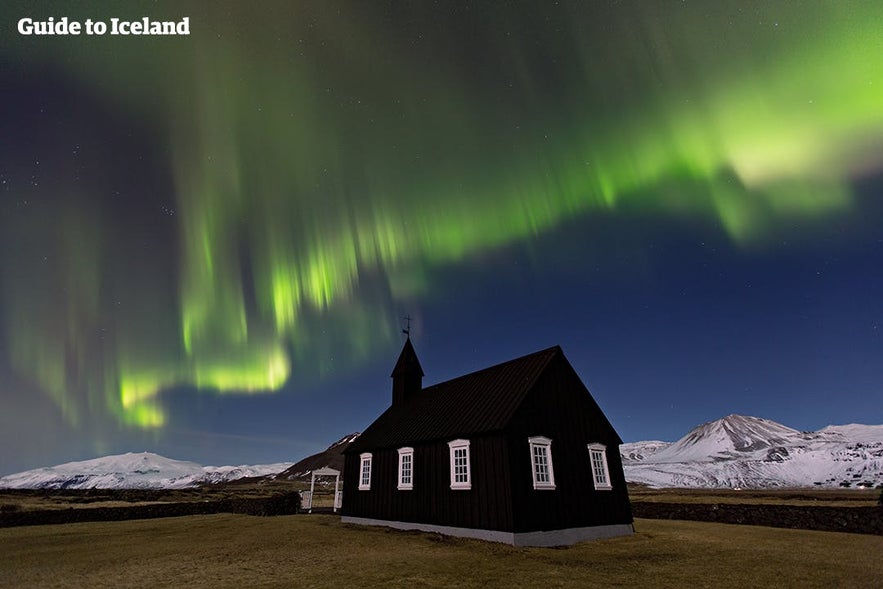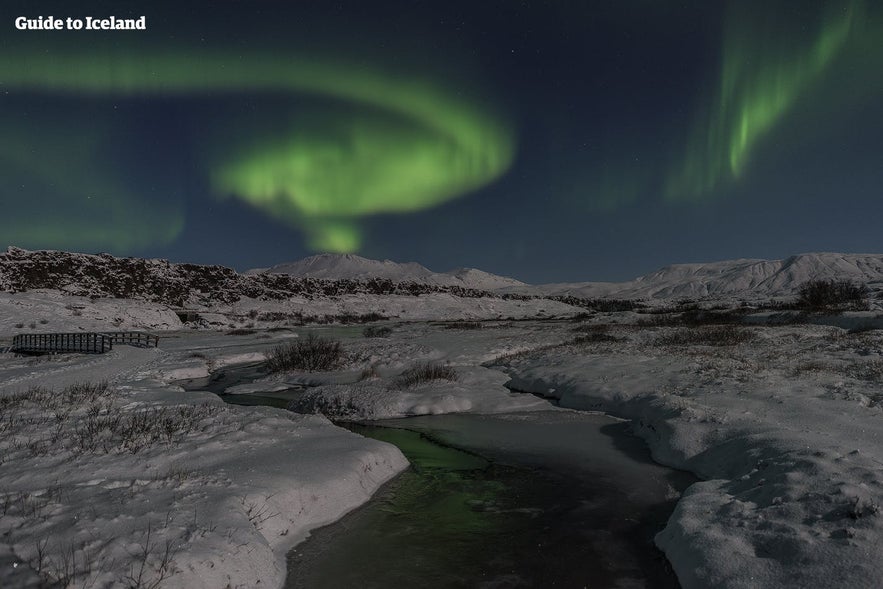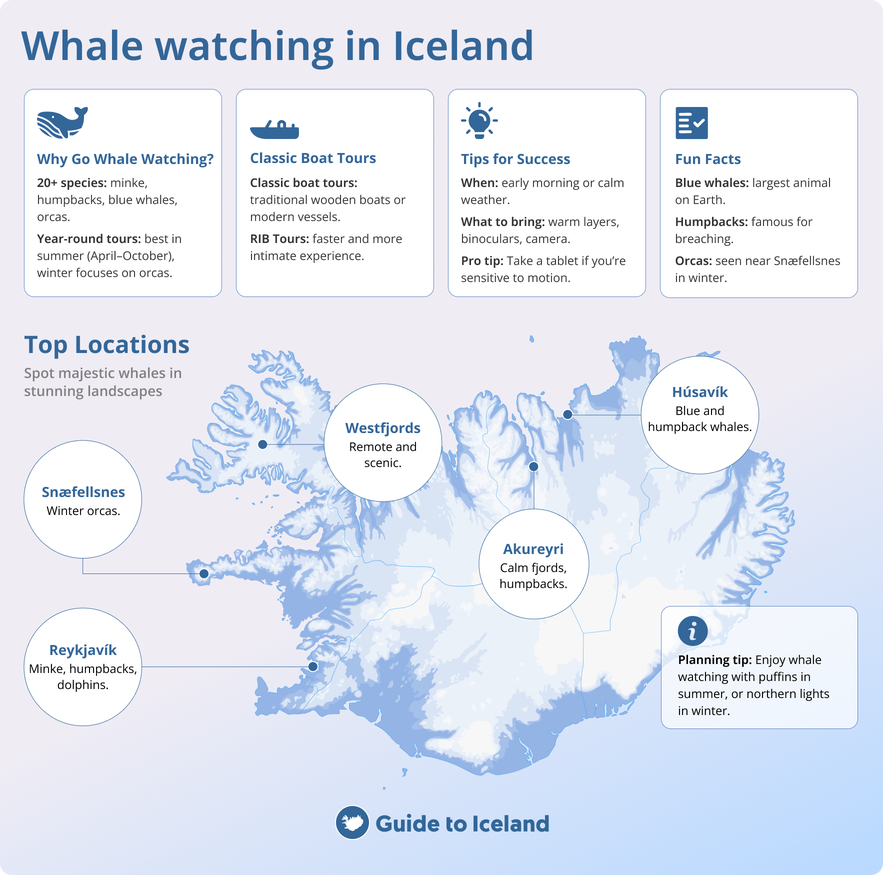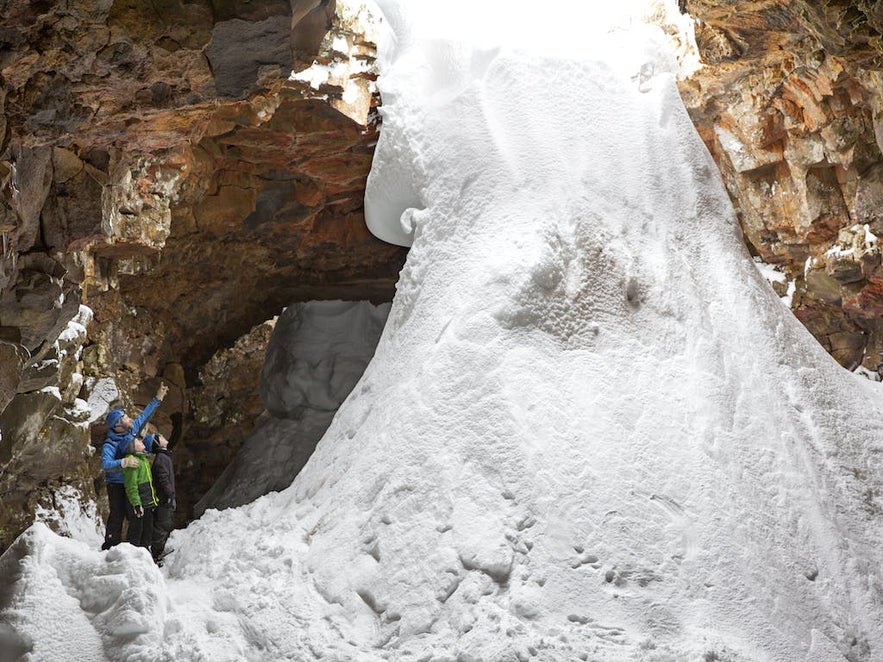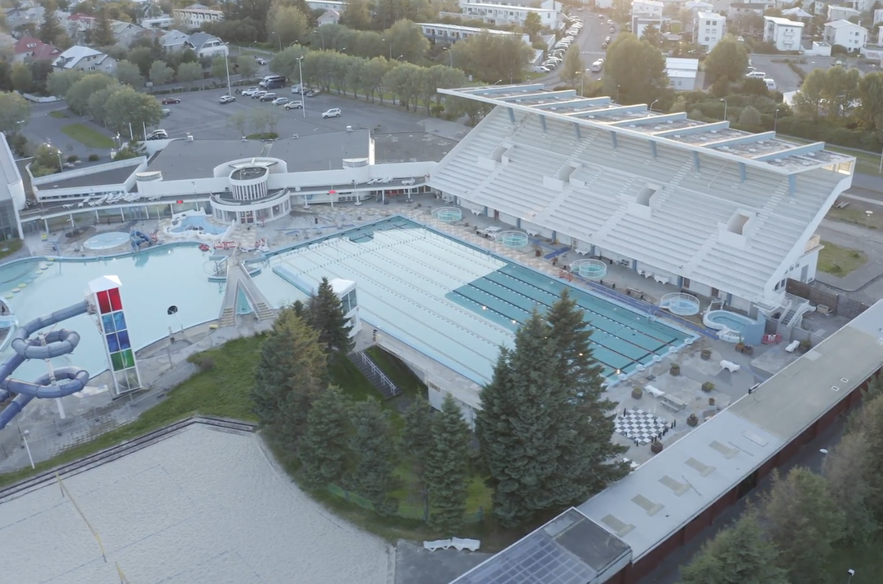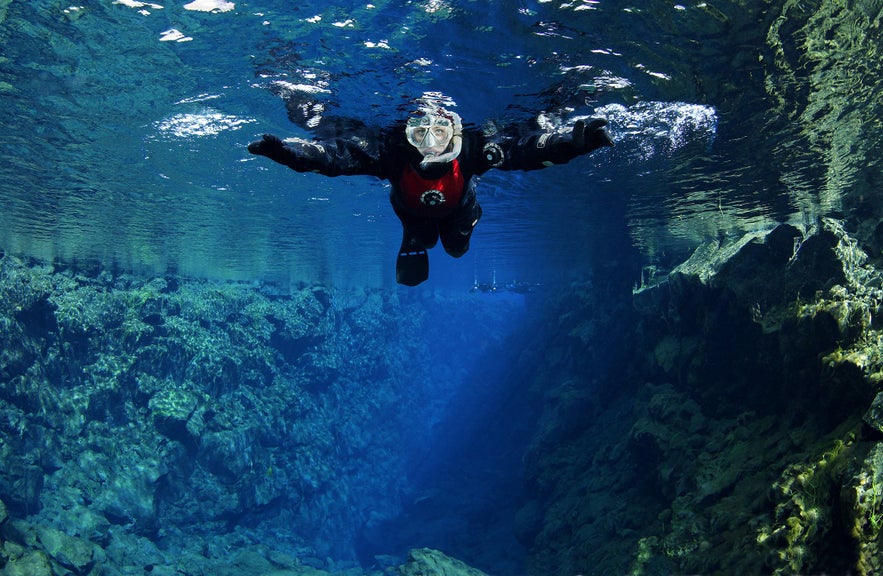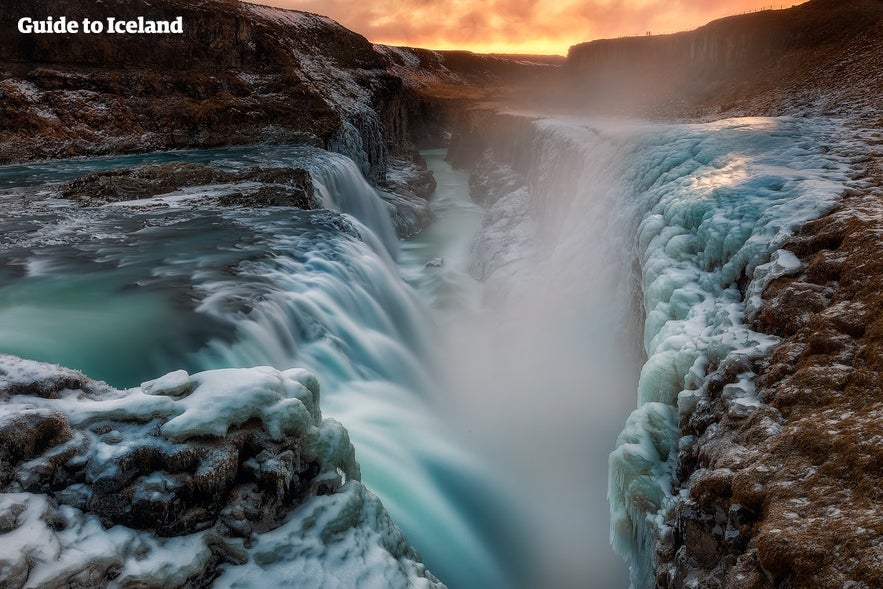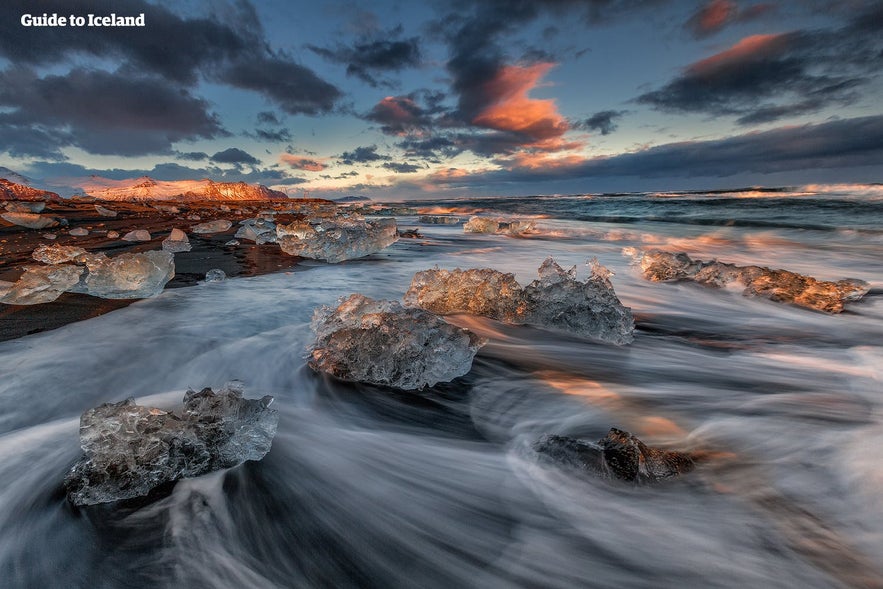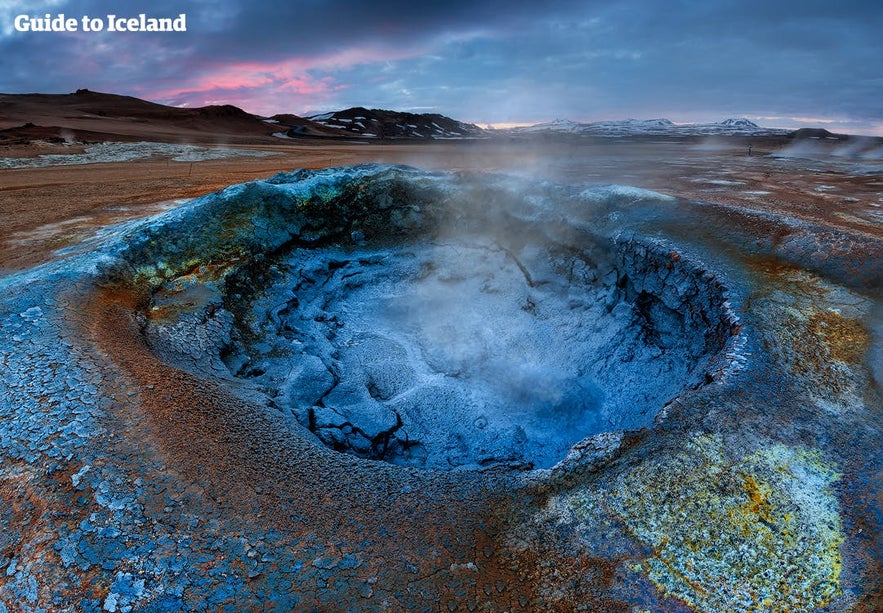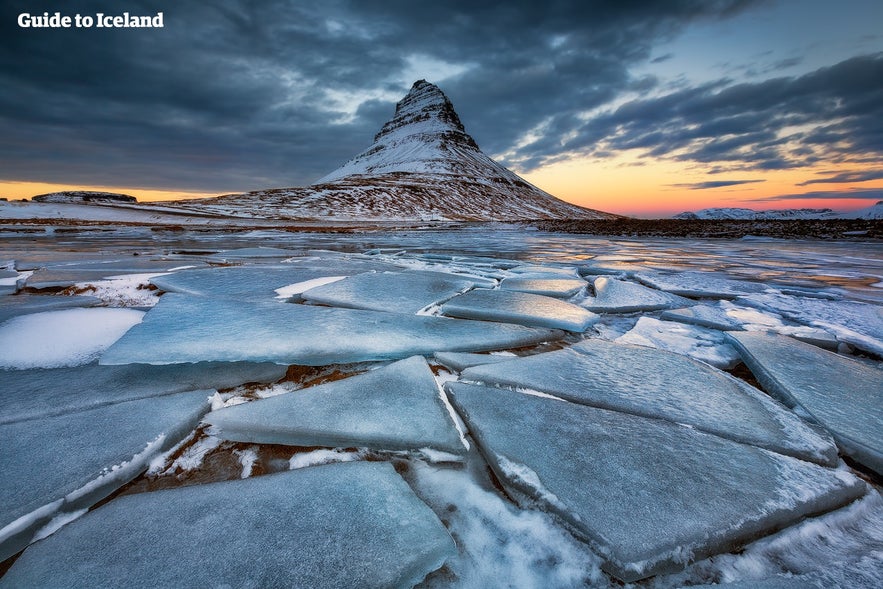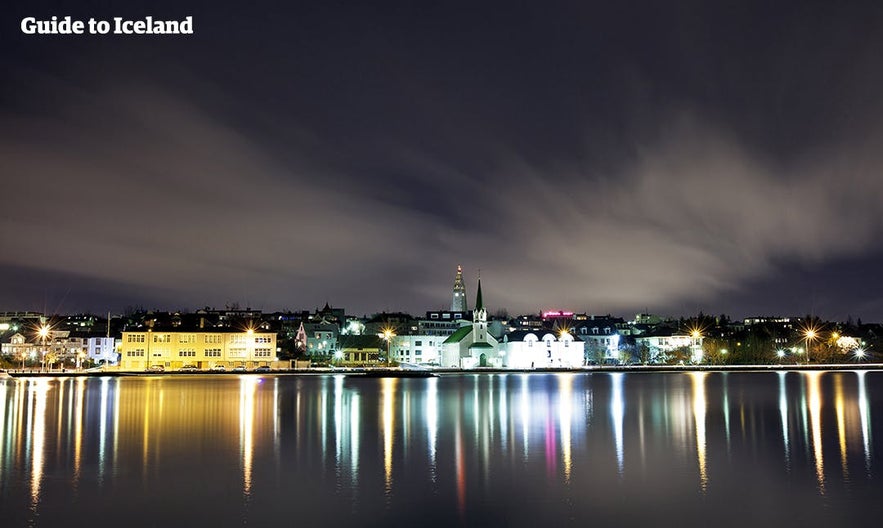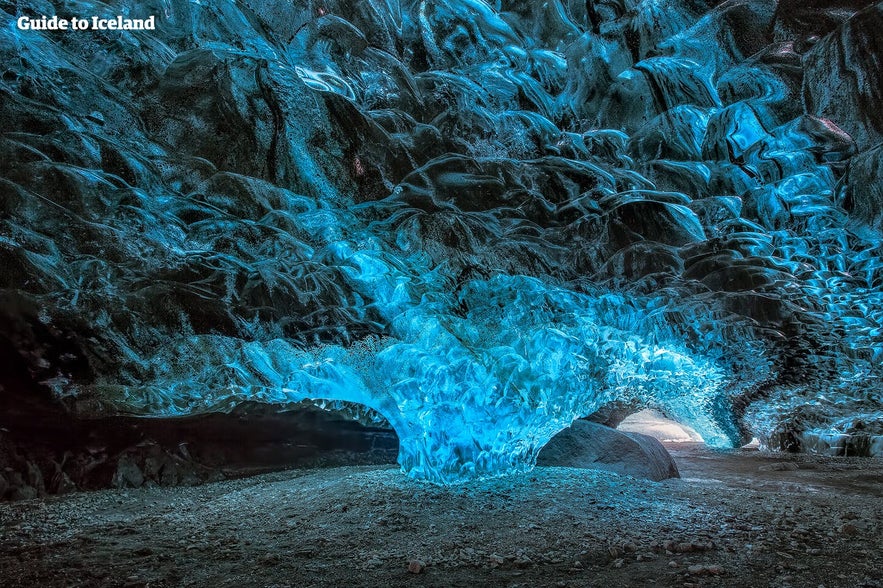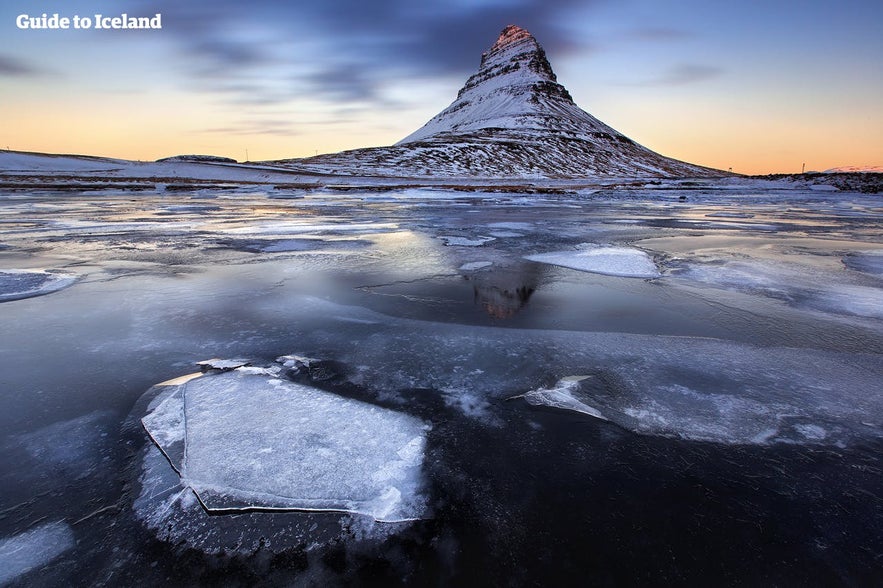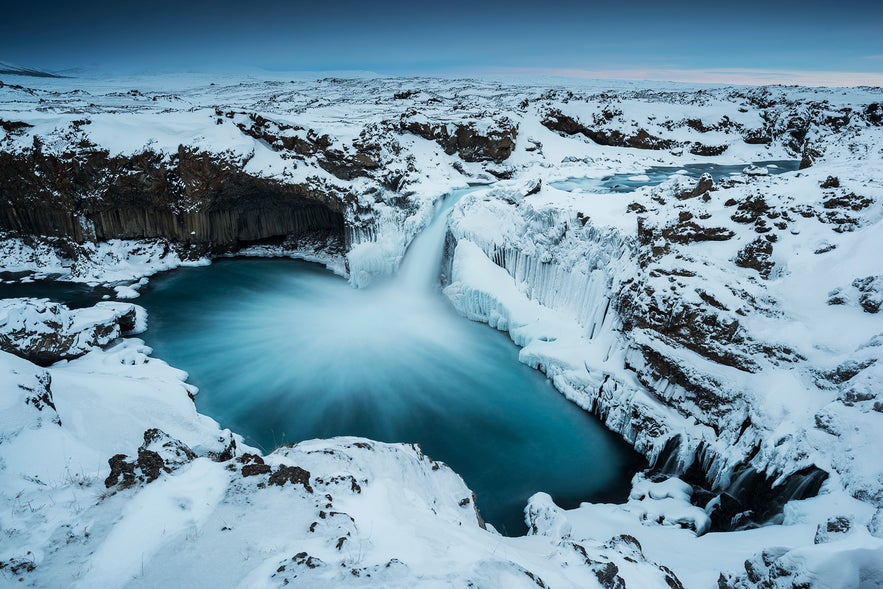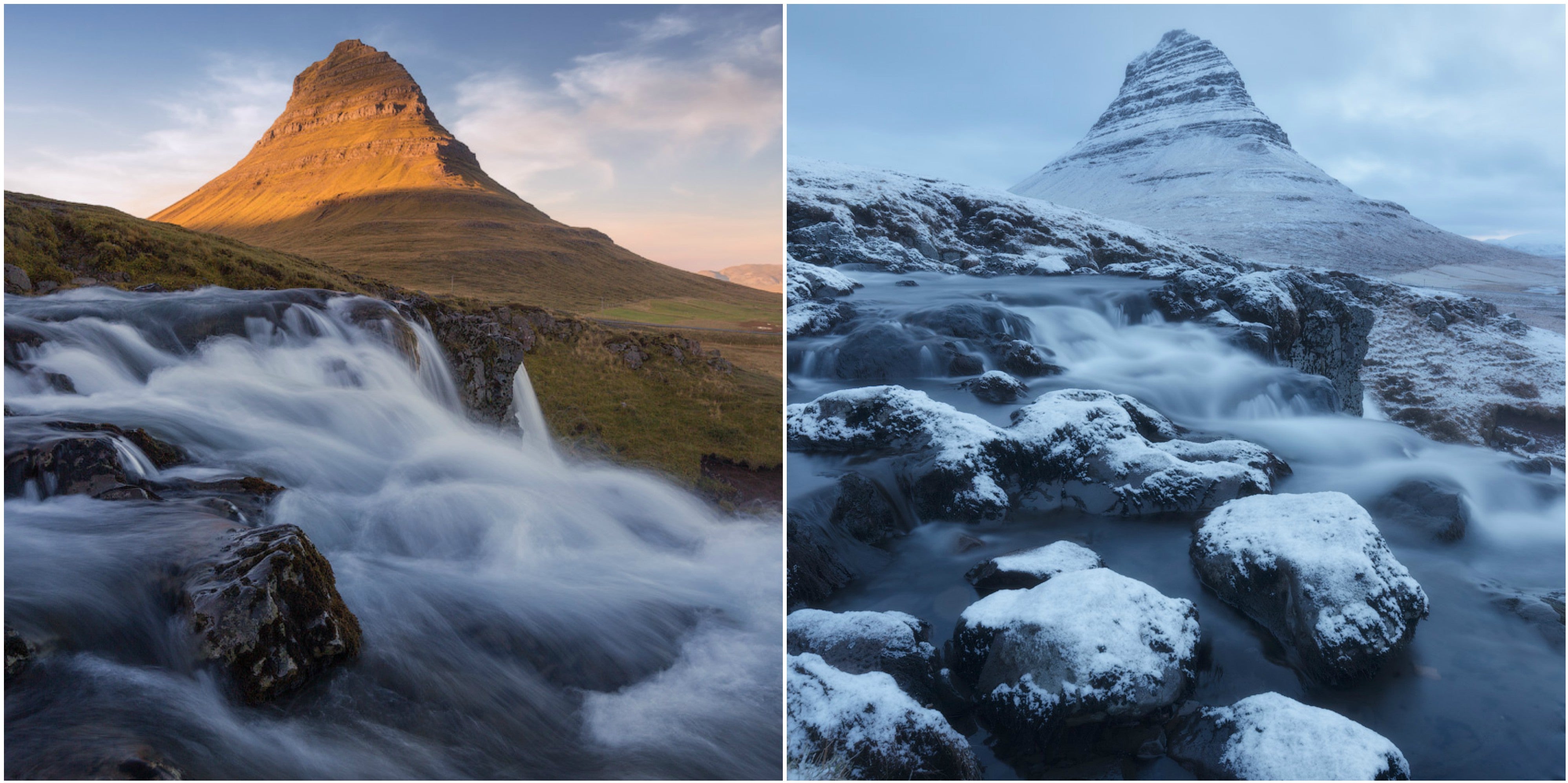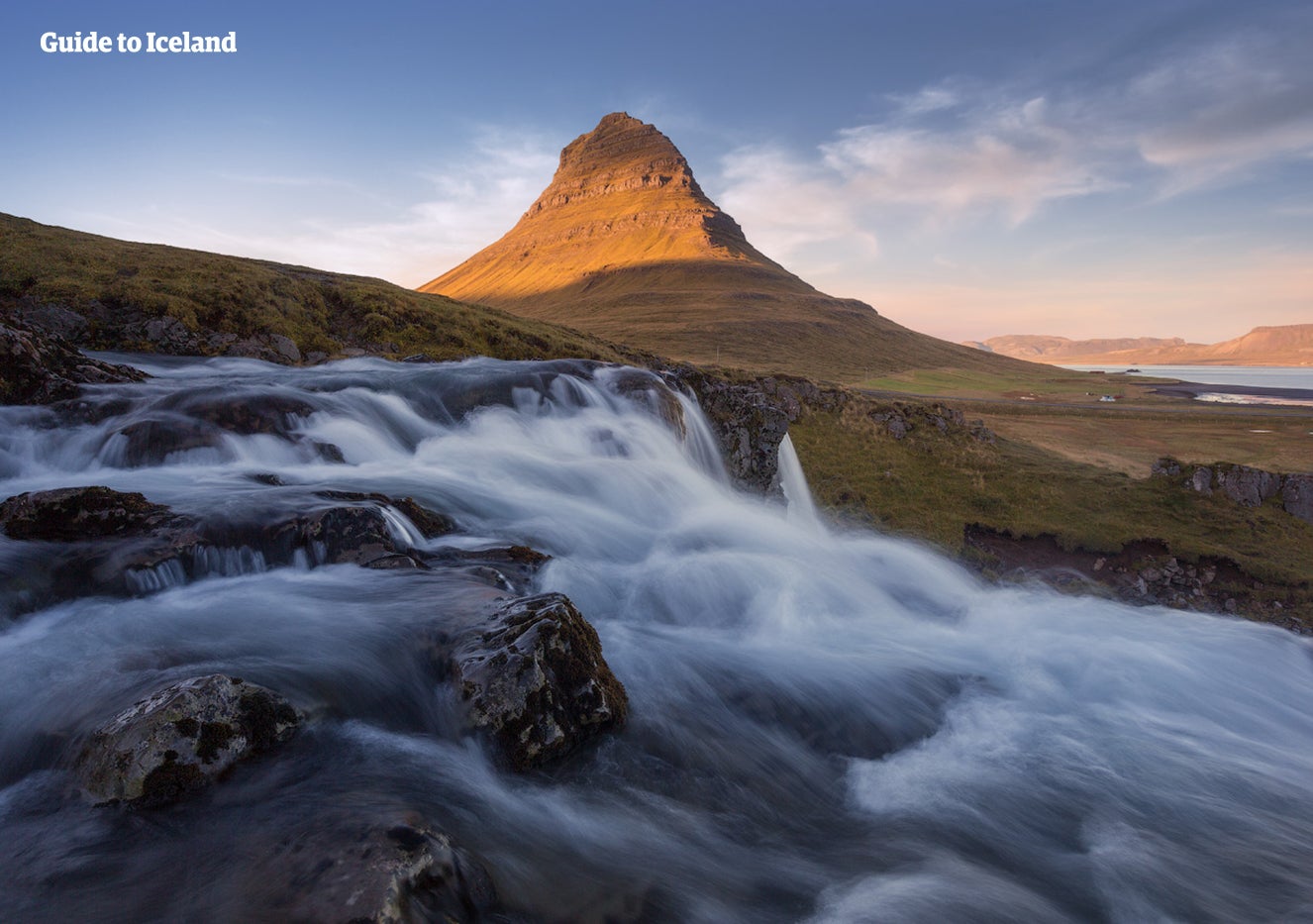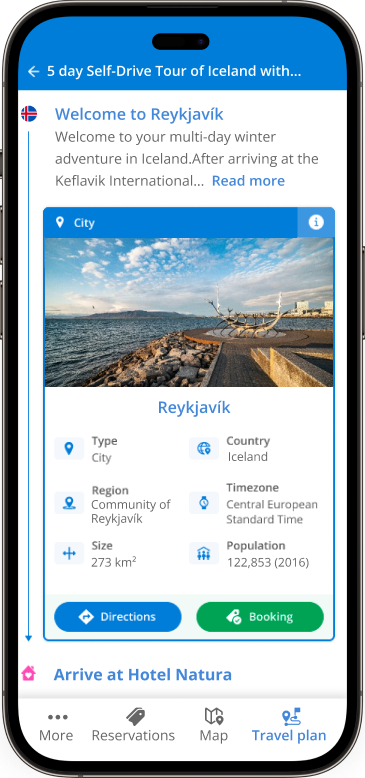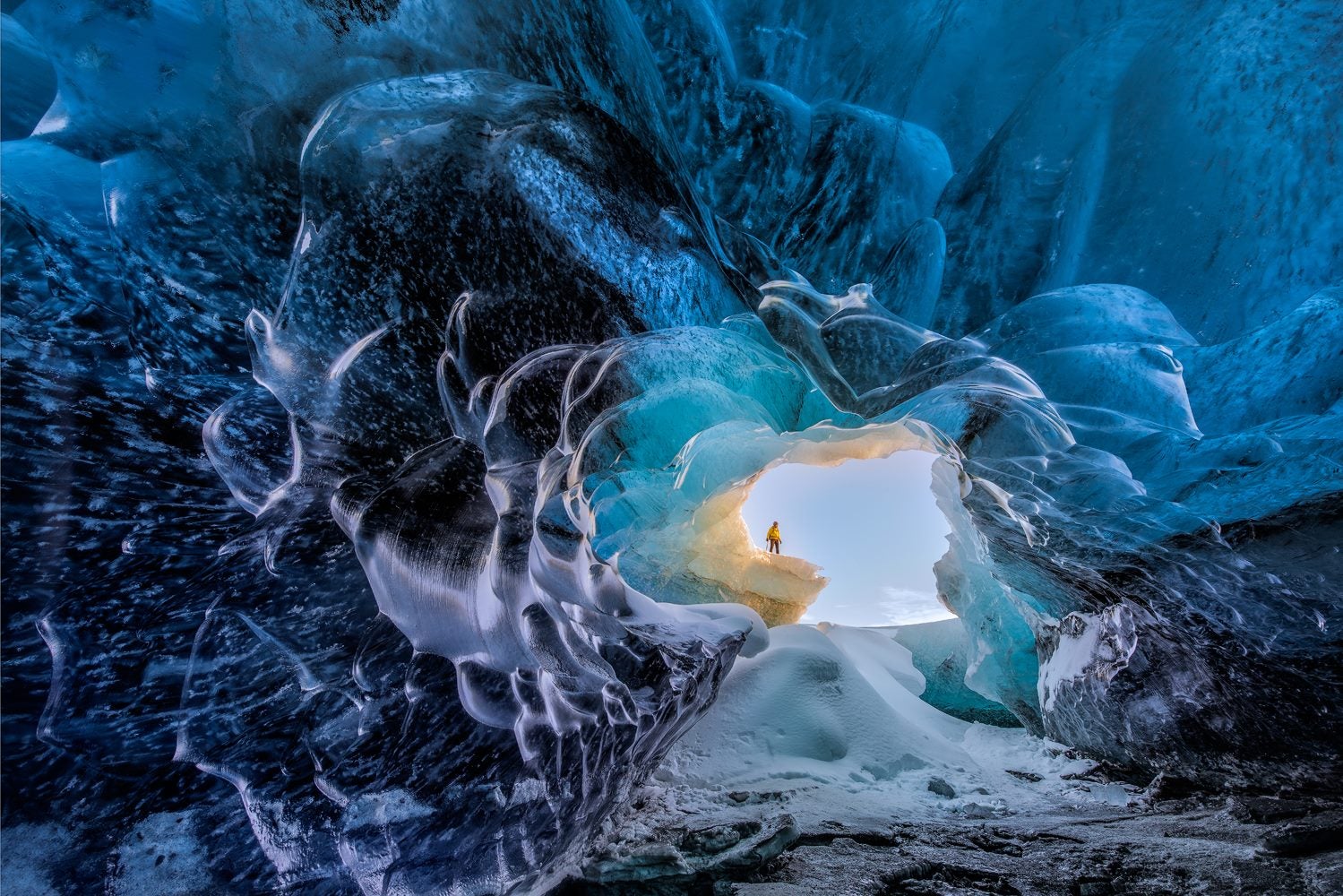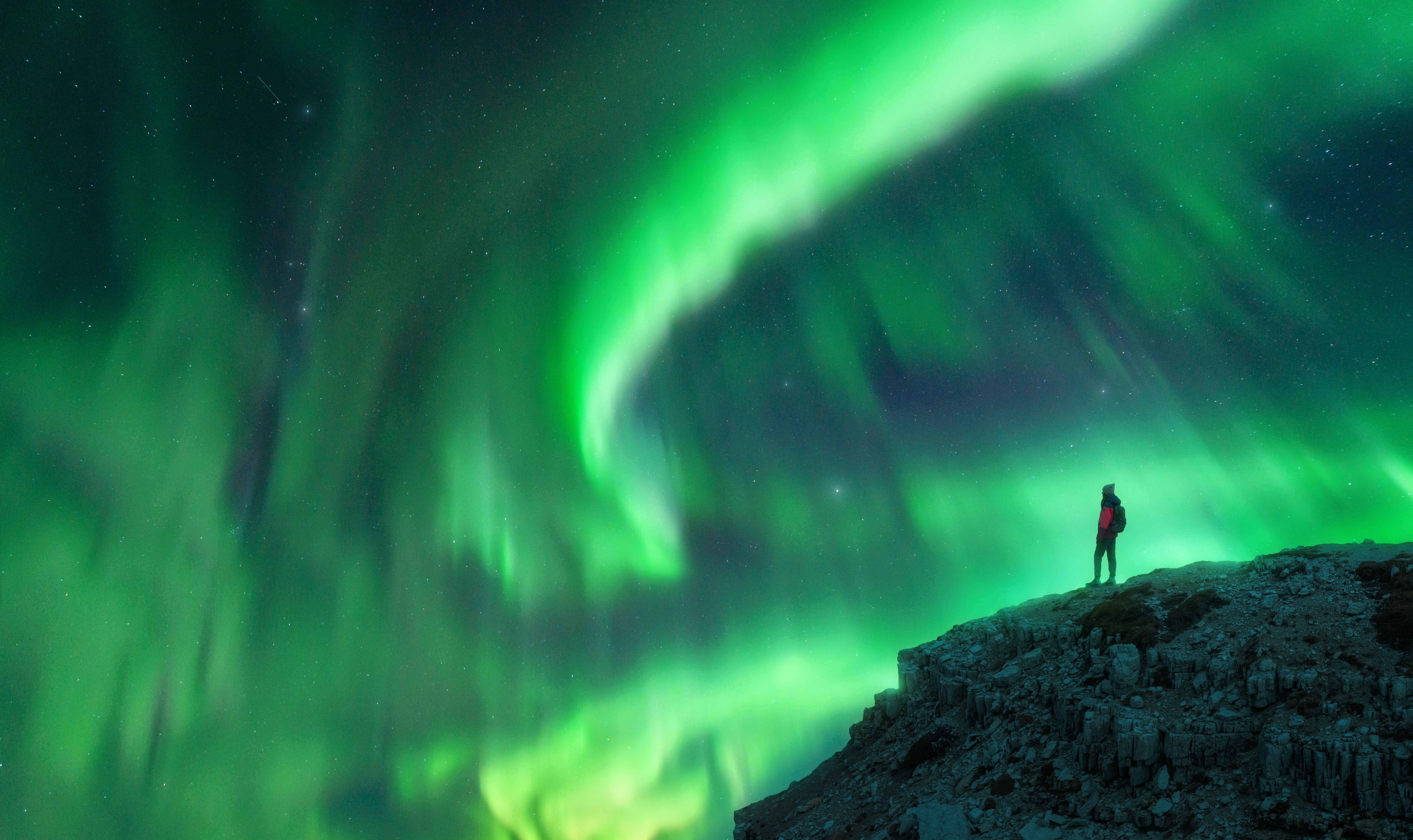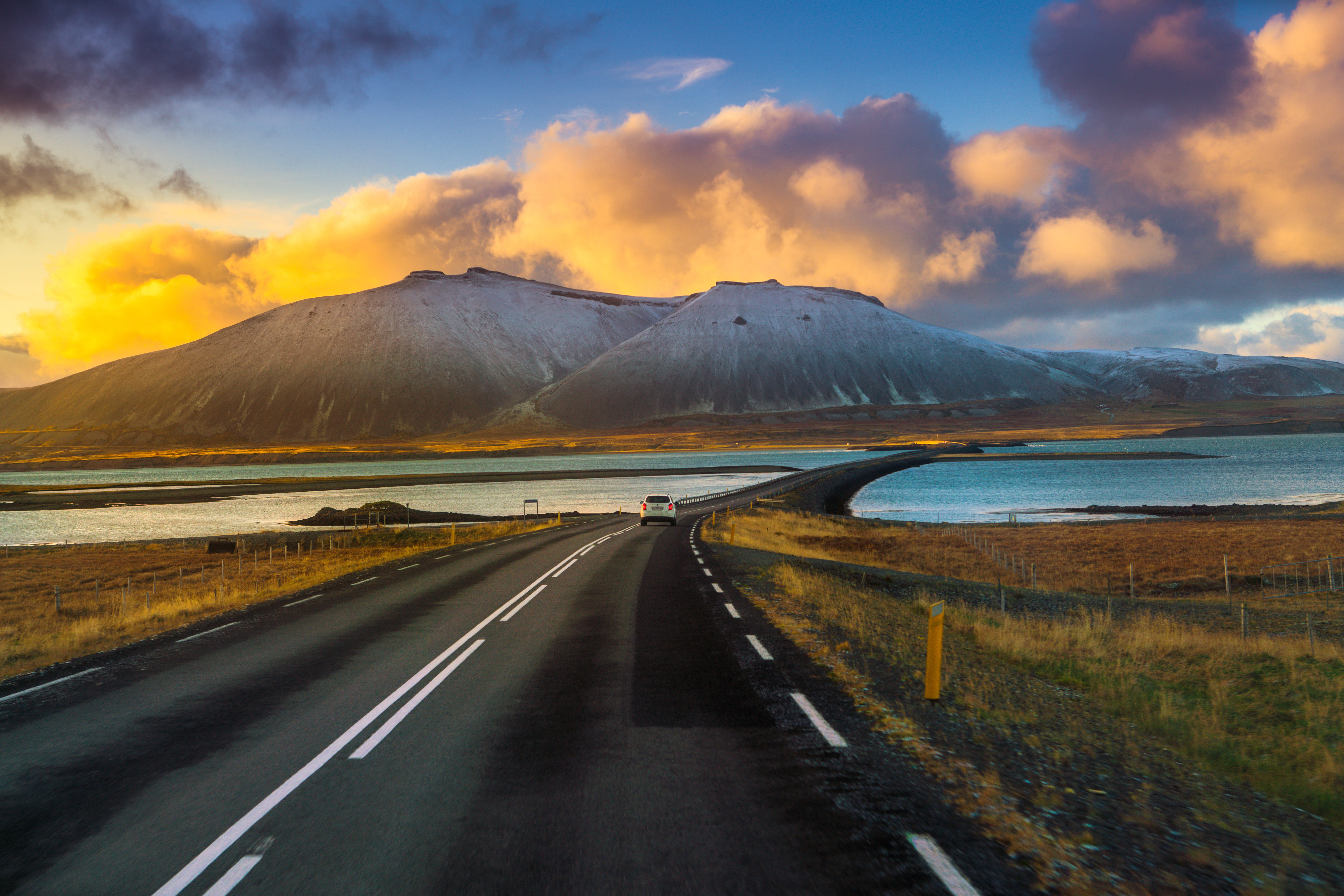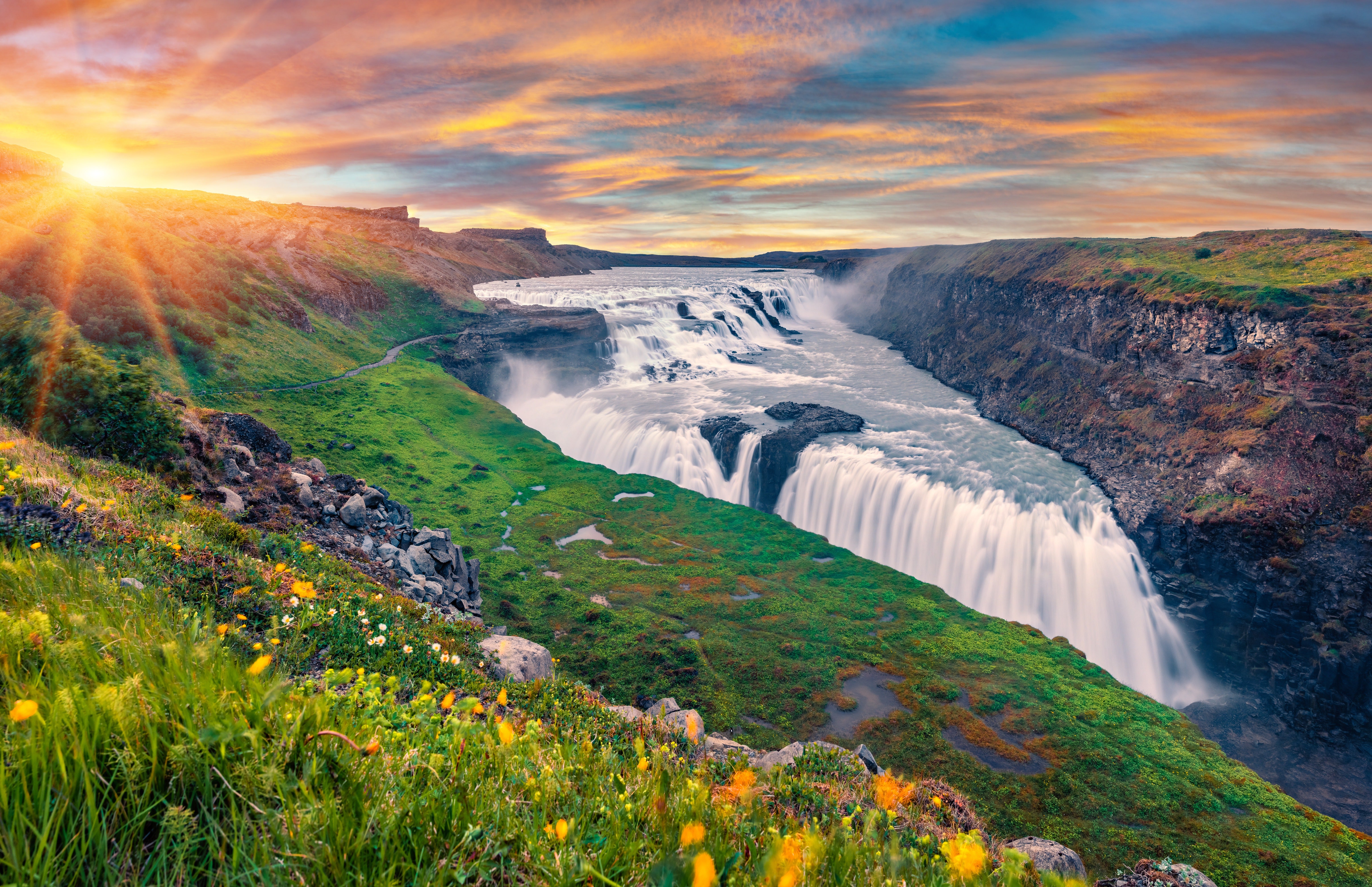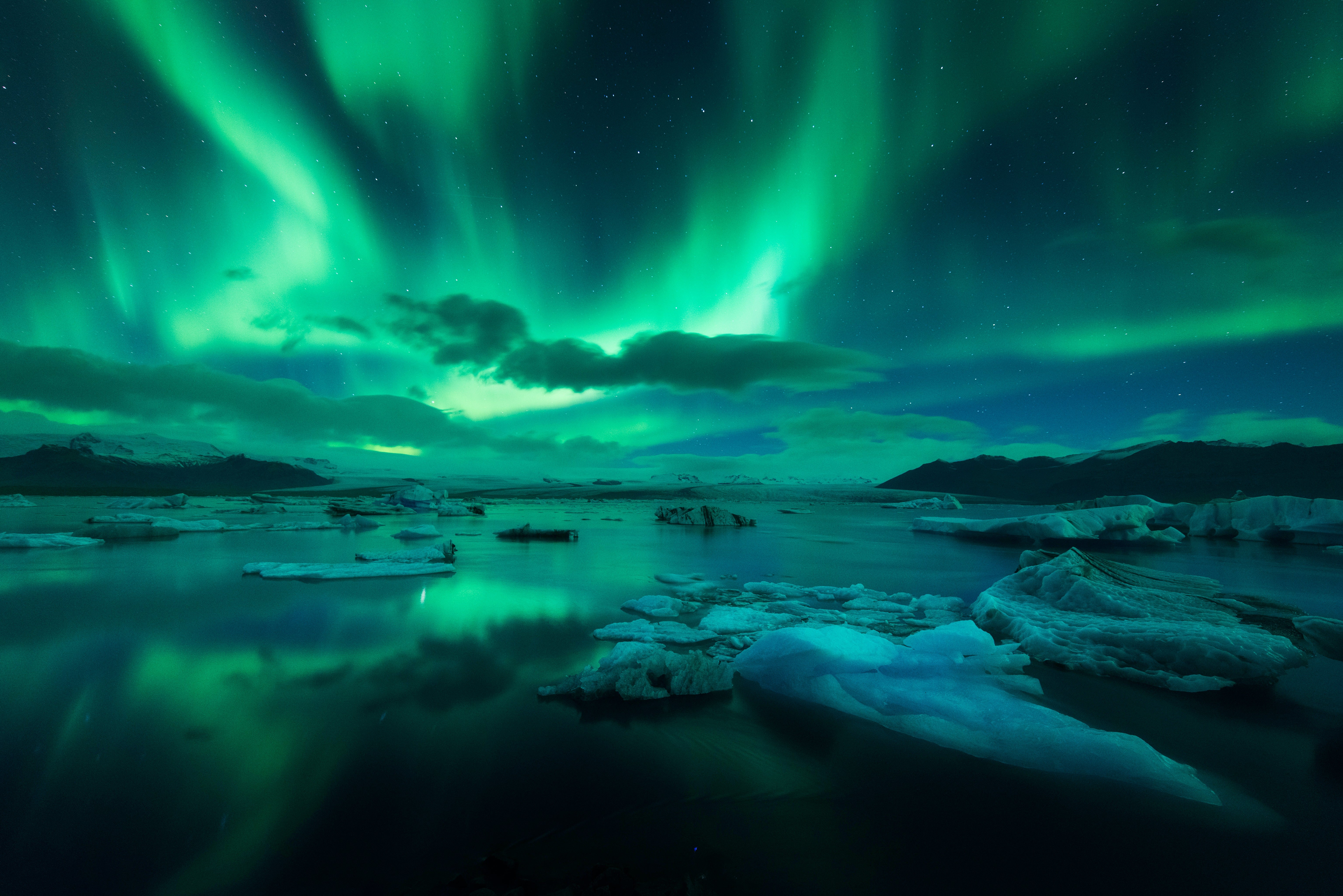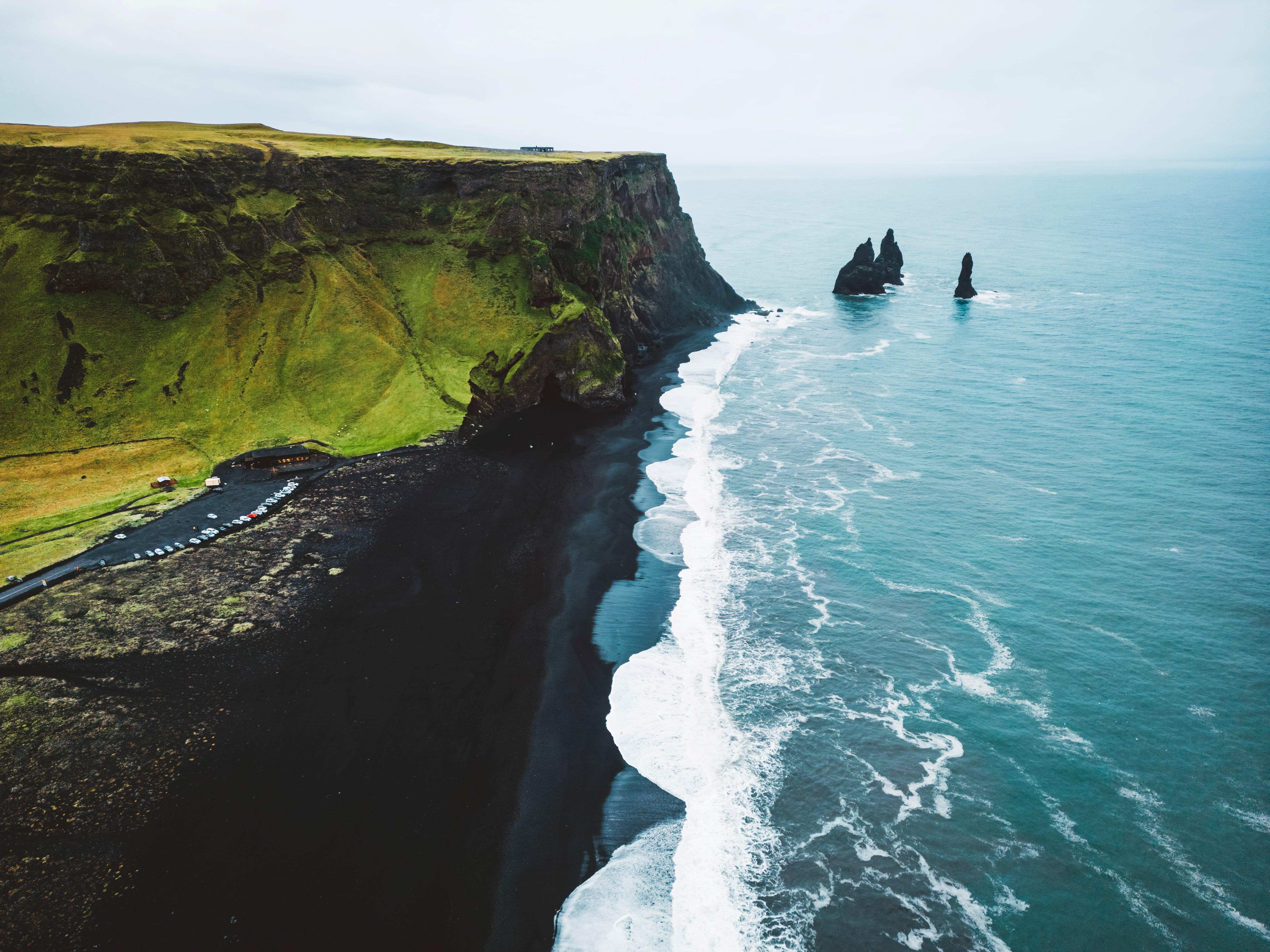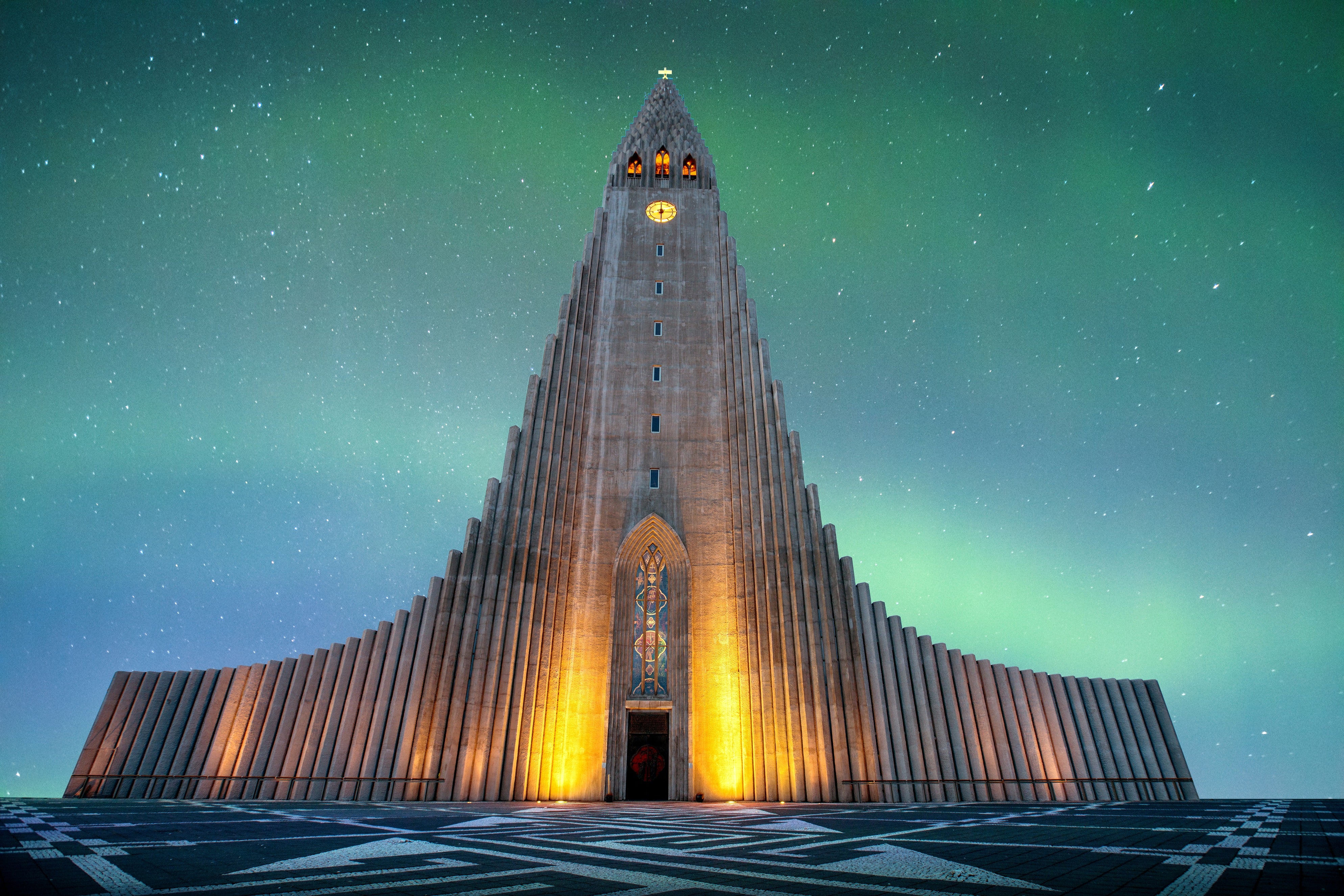
In February, most of Iceland's landscapes and towns are draped in snow. With more hours of darkness than light each day, it's an optimal time to book northern lights tours in Iceland.
Why You Can Trust Our Content
Guide to Iceland is the most trusted travel platform in Iceland, helping millions of visitors each year. All our content is written and reviewed by local experts who are deeply familiar with Iceland. You can count on us for accurate, up-to-date, and trustworthy travel advice.
Despite the dramatic climate, much of Iceland in February is still accessible. It's possible to drive the entire Ring Road during February with a rental car.
However, you can also find Reykjavik accommodation to base yourself in, making it easy to take day trips in Iceland and visit its many iconic attractions. Many travelers also join guided February tours in Iceland for added convenience.
That said, you should know that driving in Iceland in February can be dangerous. Road conditions are often hazardous, and weather can be unpredictable. It is very dark, and there is little road lighting outside population centers. You'll need to rent a four-wheel drive vehicle.
There are many benefits to visiting Iceland during this time. In February, many popular destinations are much quieter than during the high season. In recent years, February has been among Iceland's least crowded months, making it a great time to avoid crowds.
With many unique and exciting winter activities, you won't run out of fun things to do during your visit. Here's everything you need to know about visiting Iceland in February.
- Read about Iceland in January and Iceland in March
Key Takeaways for Visiting Iceland in February
-
Winter wonderland + long nights: Expect snowy landscapes, short days (about 7–10 hours of light), and prime conditions for northern lights viewing.
-
Drive only if confident: Roads can be icy, windy, and dark; rent a four-wheel drive with winter/studded tires, check conditions daily, and avoid closed F-roads/off-road driving.
-
Pack real winter gear: Waterproof boots, wind/waterproof outer layers, warm base layers (wool/fleece), hat, scarf, insulated gloves—plus a swimsuit for hot springs.
-
Iconic winter activities shine: Ice caves, glacier hikes, lava caves with ice formations, whale watching, hot spring spas, and aurora tours are all in season—book early and stay flexible for weather.
-
Easy base + quieter sites: Reykjavik makes a great hub for day trips (Golden Circle, South Coast, Snaefellsnes), and February crowds are lighter than peak season.
What To Know About Iceland in February

Driving in Iceland in February
Although Iceland's roads are usually well maintained, they can be hazardous in February. In the winter months, they are ice-layered and lined with snowdrifts.
Meanwhile, heavy rain, snowfall, and long hours of darkness can obscure your vision, and strong winds can destabilize vehicles. These are all important factors to understand when driving in Iceland in winter.
Rent a car in Iceland in February if you have experience driving in hazardous conditions and on icy, rural roads. A four-wheel drive car rental is strongly recommended for this time of year, especially if you want to follow the best advice for renting a car in Iceland.
While chains are not used, all cars have winter tires. Most car rental companies in Iceland offer studded tires. Request studded tires if they're not included in your rental.
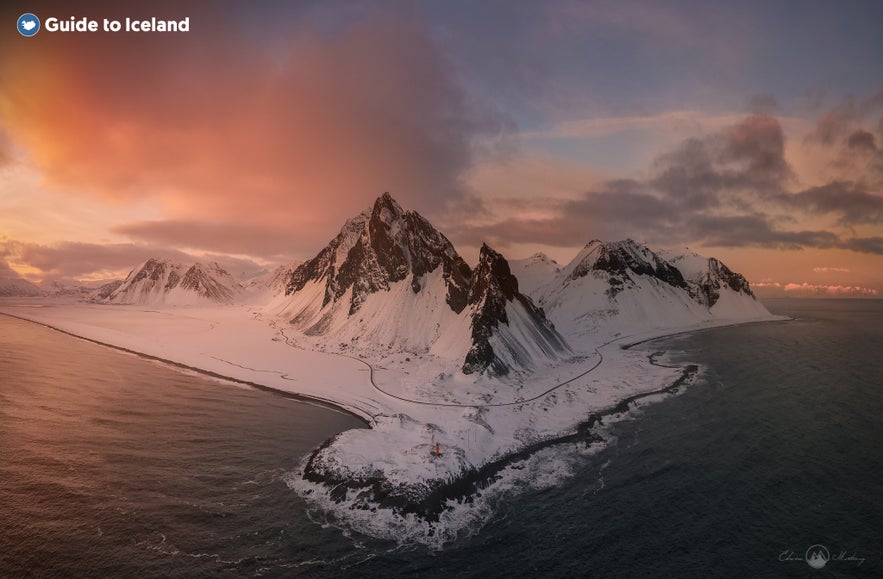
Registering your travel plans is a good idea so you can be located more easily if something goes wrong. It's also essential to check road conditions before setting out. This is especially important during winter or when traveling through remote regions. Make it a habit to review the latest updates every morning, as certain areas can be particularly vulnerable to hazards like avalanches.
The roads into the Highlands, and some roads through the Westfjords, will be closed. Many are mountain roads or "F-roads," which are only open during summer. The "F" stands for "fjall," the Icelandic word for mountain.
Be careful where you park to avoid getting stuck in the snow. Most insurance packages don't include towing charges, and you'll have to pay a hefty fee for assistance.
Never cross a road that's closed, and never drive off-road. Doing so can be fatal in winter and is illegal year-round, with heavy fines and potential prison time.
Weather in Iceland in February
The average temperature in February in the capital, Reykjavik, is 33.8 F (1 C). Although this isn’t extremely cold by Arctic standards, strong winds and frequent rain can make it feel much colder.
February in Iceland is also one of the wetter months, with an average of 3.3 inches (83 millimeters) of precipitation. You may experience snow, wind, and rain all on the same day, as Iceland’s winter weather is famously unpredictable.
Due to the changing weather and temperature in Iceland in winter, guided tours can be a practical choice. The local guides track conditions and adjust plans safely when the weather shifts.
The long nights are cold and dark, though the hours of light increase by about nine minutes every day. Snow, once settled, brings light to the darkness. On clear, cold nights, the northern lights are most visible, so bundle up and turn your eyes toward the sky.
Because conditions change quickly, make sure to monitor the Icelandic weather forecast regularly throughout your trip.
What To Wear in February in Iceland
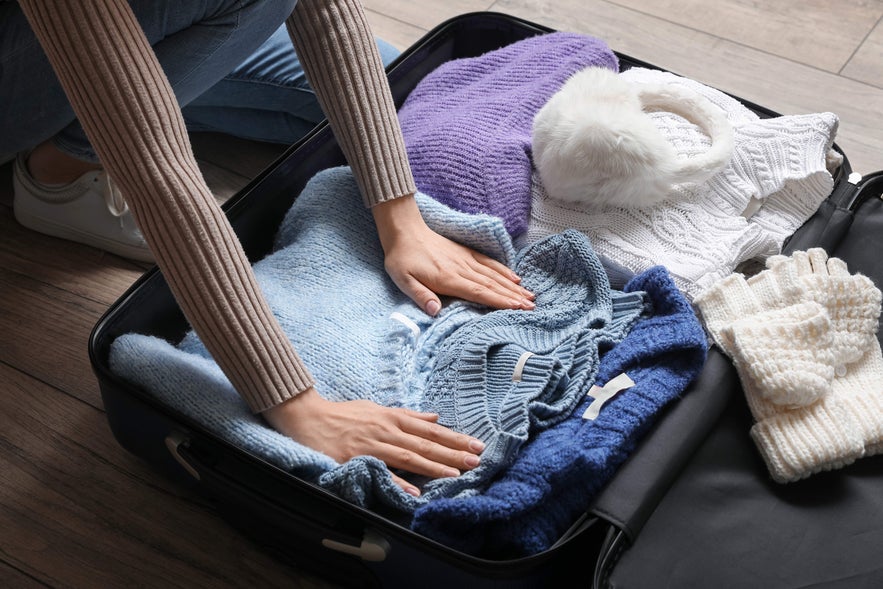 Take plenty of warm clothes with you when packing for your trip to Iceland in February.
Take plenty of warm clothes with you when packing for your trip to Iceland in February.
-
Hiking boots: Even if you plan to stay only in Reykjavik, it's a good idea to wear hiking boots. The streets can be icy, either fresh ice or melting ice. Regular shoes can get soaking wet and cold.
-
Gloves: Wearing high-quality, warm gloves is a must. Leather gloves with an inner fleece lining are great options.
-
Wind and waterproof pants: When venturing far from Reykjavik, the weather can be unpredictable. It will likely be windy and wet, so these are essential.
-
Dry suit: You’ll need a dry suit in February if you plan to do activities like snorkeling in Silfra Fissure. Underneath, wear a thin thermal or wool base layer for warmth.
-
Swimsuit: Bring one if you plan to visit hot springs, geothermal pools, or lagoons.
As a general rule on what to wear in Iceland in February, layer clothes, and wear scarves, hats, and gloves. For comfort and easy packing, fleece and wool items are the best options.
Daylight Hours in Iceland in February

When visiting Iceland in February, you'll find the days are still relatively short. As the month progresses, you can expect slightly more daylight. These changes are part of Iceland’s dramatic seasonal light cycle, ranging from the long, dark nights of winter, to the extended daylight hours and midnight sun in summer.
Here's how the start of an Icelandic February compares to its last day.
February 1
-
Time of sunrise: 10:07 AM
-
Time of sunset: 5:16 PM
-
Hours of daylight: 7 hours and 9 minutes
February 28
-
Time of sunrise: 8:38 AM
-
Time of sunset: 6:43 PM
-
Hours of daylight: 10 hours and 5 minutes
- See also: Dumbest Things to Do in Iceland
Things To Do in Iceland in February

If you embrace the cold, you will find many things to enjoy during an Icelandic February. Northern lights hunting is only possible during winter, and activities like ice caving in Vatnajokull Glacier are most popular at this time.
Here are our recommendations for the best winter activities in Iceland in February.
Spotting the Northern Lights in Iceland in February
One of the best things to do in Iceland in February is to marvel at the captivating aurora borealis in the cold night sky. Many travelers coming to Iceland in winter are here to see the northern lights.
There is reduced cloud cover and dark skies this time of year. The two key ingredients to a northern lights hunt are clear skies and strong solar activity. These conditions make it much easier to find the aurora outside Reykjavik, where light pollution is minimal. You can easily leave the city on a tour, such as this affordable northern lights bus tour or this unique northern lights cruise.
If you book a northern lights tour, take it as soon as you arrive instead of waiting. The aurora borealis is unpredictable, and most operators will take you again if you don't see the lights on the first attempt.
Tours can also be canceled if the forecast predicts cloudy skies and low intensity. You'll want as many chances as possible to see the northern lights, so be flexible if you don't see them the first time.
If you go hunting for the northern lights by yourself, check the aurora forecast (anything above a 3 is worth setting out for) and the cloud cover forecast for the area.
If you're into photography, make sure you have the right equipment and settings for photographing the aurora borealis. Patience is essential.
If you want to maximize your chances, you can book northern lights hotels for your stay. These accommodations are in good viewing areas in nature. You will need to rent a car, as they are generally outside city limits.
Ice Caving in Iceland in February
If you're wondering what to do in Iceland in February, another great activity is ice caving. The opportunity to go on ice-caving tours is rare due to glacier accessibility and the specific conditions needed for cave formation.
While there are several caves and tours around Iceland, the most impressive options are in Vatnajokull Glacier. This includes the popular crystal blue ice cave tour from Jokulsarlon Glacier Lagoon.
Most ice cave tours run from mid-October or early November until March. Check ahead of time that your desired tour is available during your trip.
Inside these crystal-blue formations, smooth walls of ancient ice glow in vivid shades of blue, creating incredible opportunities for photography.
February is one of the coldest months in the country and its stable freezing temperatures help keep ice caves in Iceland solid and safe to enter. Although tours can occasionally be affected by weather events earlier or later in the season, February is generally one of the best times to visit them.
Book your exclusive ice cave tour early, as spots fill quickly due to high demand. You're guaranteed an awe-inspiring ice-caving experience on the Vatnajokull Glacier.
Whale Watching in Iceland in February
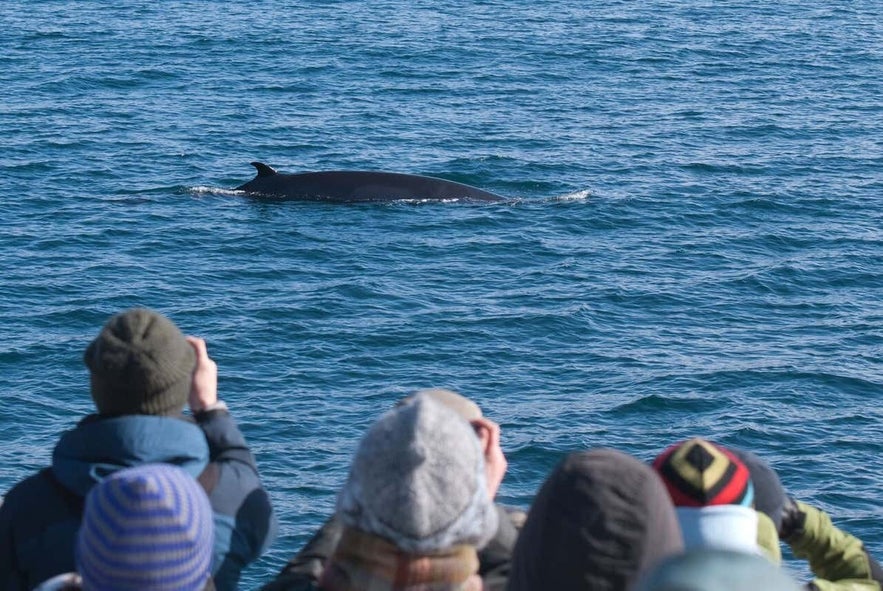
Whale-watching tours are conducted from Reykjavik and Akureyri in February and are available year-round. More than 20 species of cetacean can be seen in Icelandic waters, and several stay throughout winter.
White-beaked dolphins, known for their social nature and acrobatics, are the most common species during February. Many feed and play in Faxafloi Bay by Reykjavik.
Harbor porpoises are harder to spot than white-beaked dolphins, even though they are native year-round. Orcas, pilot whales, and beaked whales are also spotted on tours in February. It is possible to see minke whales that did not migrate that year.
Operators may cancel tours due to bad weather. There is also a chance you may not spot marine life when whale watching in Iceland. If that happens, you'll be offered another trip for free. Take this excursion early in your holiday so you can repeat it if conditions improve.
If you join a whale-watching tour, bring warm clothes to brace against sea winds. Most operators provide overalls to wear over your clothes for added comfort.
Lava Caving in Iceland in February
Exploring lava caves is enjoyable in February and a little more daunting than in summer. A major reason to take the tour in February is the beautiful ice structures that form inside the tunnels.
Because lava rock is porous, water trickles slowly through it. When water seeps through cave ceilings, it often freezes in sub-zero temperatures before dropping. This process slowly forms beautiful icicles or mini-stalactites. Water that does seep through often freezes when it hits the ground, forming mesmerizing ice shapes found in caves in Iceland.
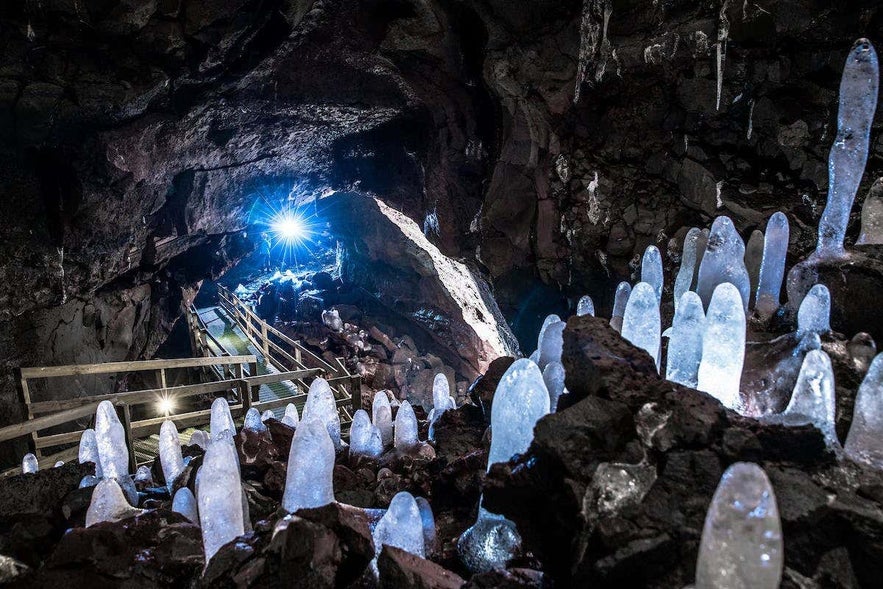
This ice creates a glitter effect for explorers and allows for magical photos. It can also make the ground incredibly slippery. Only partake in lava caving if you feel confident on uneven surfaces.
Tour operators provide crampons and a helmet. You won't need to bring additional safety equipment.
If you want easier lava cave tours, consider this classic tour of Raufarholshellir Lava Cave, or go explore Vidgelmir Cave. Both are wide and open, require no climbing or crawling, and have walkways throughout.
- See also: Top 7 Volcanic Experiences in Iceland
Soaking in Geothermal Pools in Iceland in February
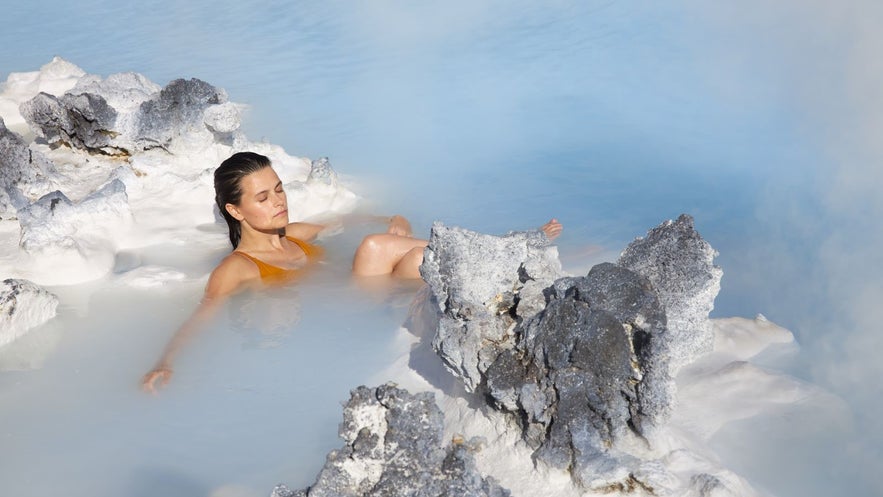
Soaking in geothermal pools is one of the best things to do in Iceland in February. There’s nothing quite like plunging into warm, steaming water while icy winter air swirls around you. It's an experience that defines many of the hot springs and geothermal pools in Iceland.
Among its many geothermal sites, the Blue Lagoon remains the most popular hot spring in Iceland. It stays open year-round, and visitors get to relax in its warm, milky-blue waters while surrounded by winter landscapes.
Many visitors choose to book Blue Lagoon tours in Iceland in February for added convenience and flexible time slots.
February also offers great opportunities for photography. Thick steam rises into the cold air, creating striking contrasts between the blue water and snowy surroundings. You might even spot the northern lights if you visit the Blue Lagoon in the evening.
Beyond the Blue Lagoon, there are other fantastic geothermal spas, hot springs, and public pools around Iceland. For a lovely moment of relaxation within the Capital Region, visit the Sky Lagoon or head to the picturesque Hvalfjordur Fjord for a dip in the luxurious Hvammsvik Hot Springs.
There are plenty of hot spring tours available in February. You can find entry tickets, transfers, and combination experiences, such as this Golden Circle and Blue Lagoon tour from Reykjavik.
Swimming in Public Pools in Iceland in February
Public swimming pools in Iceland are popular meeting places. Icelanders go swimming after work, on weekends, and whenever they want to relax with friends.
These geothermally heated pools can be found in most towns around Iceland. In Reykjavik alone, there are seven public pool centers. These include some of the best swimming pools in Reykjavik.
If you're planning to explore several of them during your stay, consider purchasing a Reykjavik City Card. The card gives you access to public pools, buses, and various museums in Reykjavik. It’s available in 24-hour, 48-hour, and 3-day versions, depending on how long you’re staying in the city.
The largest pool in Reykjavik has two Olympic-size pools (one indoor and one outdoor) as well as several smaller ones.
Soaking in an outdoor heated pool while the air temperature is near or below freezing is one of the most unique and authentic experiences you can have in Iceland. If you plan to visit Iceland in February, include it in your itinerary.
Snorkeling in February in Iceland
In February, going on snorkeling tours in Iceland may seem like it's only for daredevils. With modern drysuit equipment, it becomes possible for almost anyone.
The snorkeling location, the Silfra Fissure, is open year-round and is widely considered one of the top dive sites in the world. It is the only place where you can swim between the continents. It's the meeting point of the North American and Eurasian tectonic plates in Iceland.
Silfra is located in Thingvellir National Park. It is a ravine filled with crystal-clear spring water, with visibility that exceeds 330 feet (100 meters). Once inside, you'll enter an unforgettable world of magical blue light and fascinating geology, a highlight of scuba diving and snorkeling in Iceland.
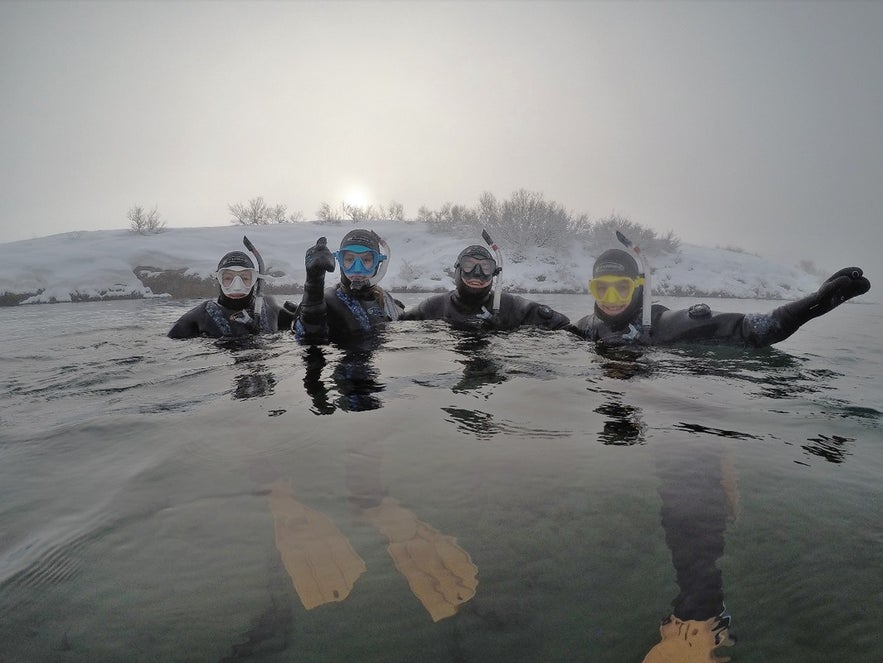
The only thing that makes this activity more wonderful is being surrounded by snow and ice while you swim. Snorkeling in a winter wonderland is a unique opportunity that can only be experienced in very few places worldwide. There are even fewer snorkeling locations directly between two dividing tectonic plates.
It is also possible to go on diving tours in Silfra, but participants must be qualified drysuit divers or have 10-30 officially logged drysuit dives over the past two years. Always check the specific requirements when booking.
Conditions to snorkel in Silfra may vary slightly between tour providers, but generally include:
-
You must be over 16 years old
-
You must be able to swim
-
You must be taller than 4 feet 7 inches (145 centimeters) and weigh more than 99 pounds (45 kilograms)
-
You must have a medical waiver if over 60 years old
-
You must have a medical waiver if over 45 years old and a heavy drinker or pipe smoker
-
You must have a medical waiver if there are underlying neurological, circulatory, or respiratory problems
-
You must not be pregnant
Glacier Hiking in Iceland in February
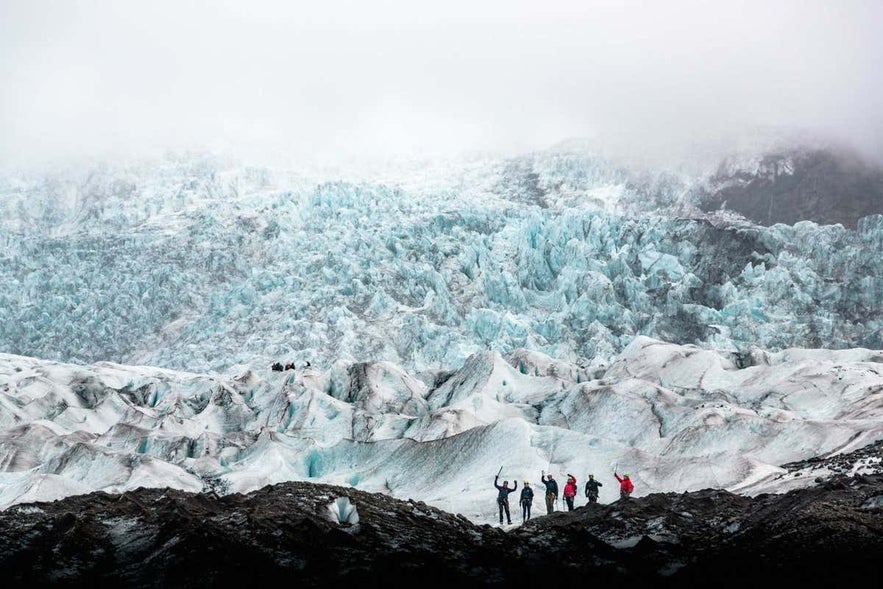
Glacier hiking tours run throughout the year in Iceland and are rewarding whenever you go. The appeal in February comes from the electric blue ice that covers the glaciers in midwinter and the ice caves that form across them.
The two main glaciers open for glacier hiking in Iceland in February are Solheimajokull Glacier and Skaftafell Nature Reserve, where several glacier tongues extend from Vatnajokull Glacier. Both are located in South Iceland. With an experienced glacier guide, you can immerse yourself in these fascinating locations and learn about Iceland's geology.
Horseback Riding in Iceland in February

One thousand years of evolutionary isolation have turned the Icelandic horse into a strong and resilient animal, able to thrive in cold February temperatures. Unless the conditions border on a blizzard, they are happy to be outside, socialize, and play in the snow. Thanks to their resilience, horse riding tours are available throughout the year.
Riding horses is a great way to immerse yourself in winter landscapes and to learn the history of a nation that relied on these steeds for survival and prosperity. Icelandic horses are curious and intelligent, making them a pleasure to spend a morning or afternoon with.
Riding an Icelandic horse is one of the most authentic Icelandic experiences you can have when visiting the country. Don't miss the chance to make it part of your February vacation.
Sightseeing in Iceland in February
Although much of Iceland's interior and parts of the Westfjords are inaccessible throughout winter, many destinations are still accessible for sightseeing. It's possible to traverse the entire Ring Road, either as part of a guided package or by driving yourself, as long as you plan driving times flexibly.
Most travelers come to Iceland for its natural sites, and in February, you won't be disappointed. Below are four hand-picked recommendations for the best sightseeing destinations in February.
The Golden Circle in Iceland in February
Iceland's most popular tourist trail consists of three sites: Thingvellir National Park, the Geysir Geothermal Area, and the Gullfoss Waterfall. Together, they form Iceland’s Golden Circle, a route renowned for dramatic beauty and unique charm. Most visitors to Iceland make an effort to see them, and February is no exception.
Thingvellir is beautiful under a thick blanket of snow, and many features, such as the Oxarafoss Waterfall, are at least partially frozen. The heat beneath the ground at the Geysir Geothermal Area makes it a plateau of multicolored earth within a powdery white sea.
At this time of year, the Gullfoss Waterfall adorns the rocks with crowns of frost that glisten beside the powerful surging water.
Golden Circle tours are among the most popular activities for visitors in Iceland.
The South Coast in Iceland in February
Another beautiful region to visit in February is the South Coast. It has an enormous range of landscapes and landmarks. The South Coast of Iceland is especially popular in winter, offering dramatic sights covered and dusted with snow.
There are the waterfalls Seljalandsfoss Waterfall and Skogafoss Waterfall, the glaciers Solheimajokull and Vatnajokull, the volcanoes Eyjafjallajokull, Katla, and Hekla, and awe-inspiring sites such as Skaftafell Nature Reserve, Reynisfjara Black Sand Beach, the plane wreckage at Solheimasandur, and Jokulsarlon Glacier Lagoon.
South Coast tours are popular throughout the year. One notable place to know is the wild coast at Reynisfjara Beach. Visitors are often captivated by the waves of Reynisfjara, which are both powerful and unpredictable.
There is no landmass between the Icelandic coastline and the rest of Europe, meaning waves can gather great strength as they travel long distances. These waves can emerge unpredictably and have taken people out to sea throughout the years. When visiting the wild coast, marvel from a safe distance.
Lake Myvatn in Iceland in February
The Lake Myvatn region of North Iceland is an excellent winter sightseeing destination, especially for fans of Game of Thrones. Travelers who want a deeper look at the area can explore a detailed Lake Myvatn guide, which highlights its volcanic landscapes and winter attractions.
Several scenes north of The Wall were filmed here, including the wildling camp of Mance Rayder. The famous underground love scene between Ygritte and Jon Snow was filmed in Grjotagja Cave. This place is frequently highlighted in many Game of Thrones guide in Iceland.
Geological formations protrude from the frozen surface of Lake Myvatn, and the snow-topped lava at Dimmuborgir (which translates to "Dark Fortress") creates a fascinating, ice-clad spectacle.
Snaefellsnes in Iceland in February
The Snaefellsnes Peninsula is a 56-mile (90-kilometer) stretch often called "Iceland in Miniature." Expect volcanoes, mountains, lava fields, stunning beaches, geological formations, fields, and historic villages year-round.
In February, snow covers the peninsula mountains, rivers and waterfalls are partially frozen, and the craggy coasts captivate. It's not uncommon to spot orcas from the shore. Snaefellsnes is the best spot to view orcas in February.
You can visit with Snaefellsnes tours, but consider spending at least two days exploring the region. There is much to see including the best activities in the Snaefellsnes Peninsula. There are also plenty of comfortable Snaefellsnes accommodations to choose from.
Festivals and Festivities in Iceland
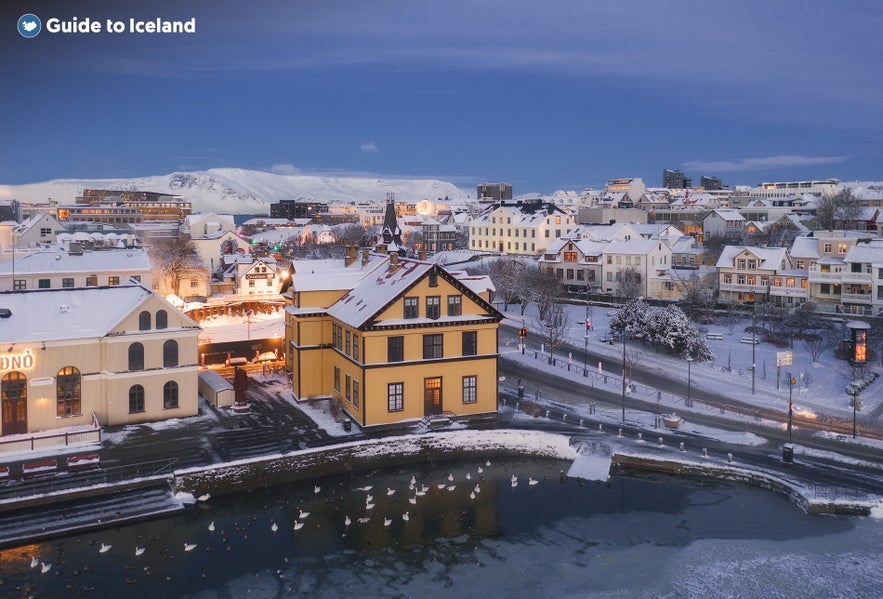 While most tourists come to Iceland seeking natural wonders, many also come for the vibrant festival scene of Reykjavik which showcases some of the most popular festivals in Iceland. Not a month goes by without events gripping the capital and drawing visitors and locals alike.
While most tourists come to Iceland seeking natural wonders, many also come for the vibrant festival scene of Reykjavik which showcases some of the most popular festivals in Iceland. Not a month goes by without events gripping the capital and drawing visitors and locals alike.
Below, you can find some of the major events in Iceland during February.
Winter Lights Festival
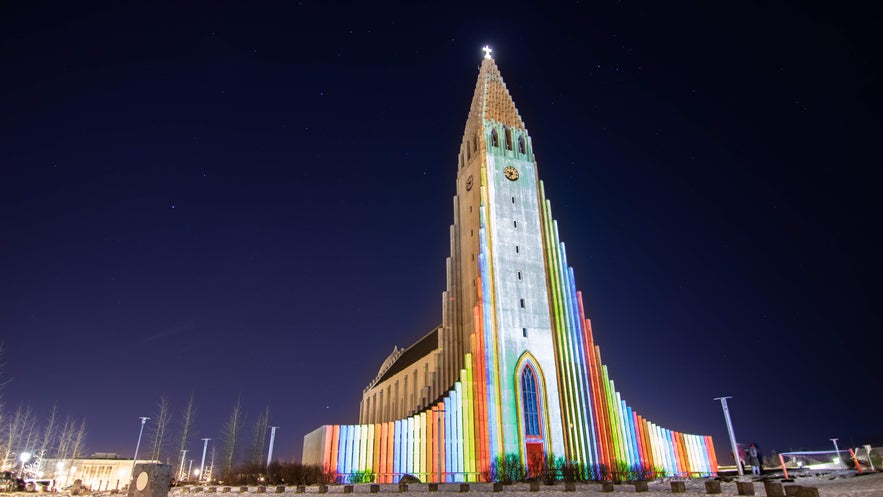
The Winter Lights Festival occurs every year on the first weekend of February. It celebrates the lengthening days and the beauty of the winter world.
The festival begins when lights across the city are turned on and is followed by days of cultural events covering music, sports, art, and history.
Two unmissable nights of the festival are Museum Night and Pool Night, when the city's museums and public pools offer unique entertainment.
Thorrablot
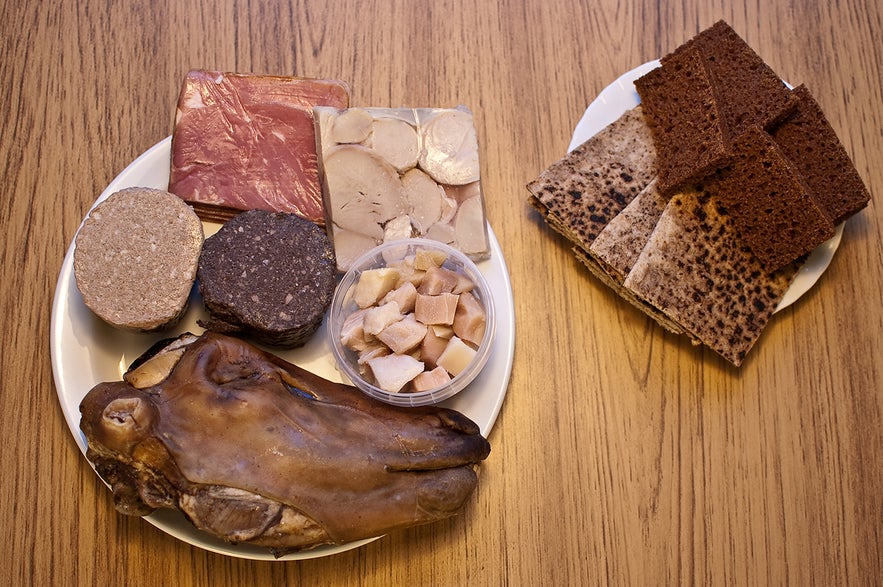
Photo from Wikimedia, Creative Commons, by The blanz.
Thorrablot is a cultural festival that takes place from the end of January to the second half of February, based on the lunar month of Thorri on the old Norse calendar. During this festival, Icelanders honor their ancestors and customs in several ways, including dining on foods eaten in Iceland through the centuries.
While a few of the foods served during the month of Thorri might not seem appealing to outsiders, eating them was necessary for surviving Iceland's harsh environment. Some include "hakarl" (fermented shark), "svid" (boiled sheep's head), and "hrutspungar" (ram's testicles).
If you're not the adventurous type, there are plenty of other delicious traditional meals to enjoy, such as smoked lamb, rye bread, and stockfish, which goes great with butter. These dishes are an important part of Iceland’s food culture.
Thorrablot is not typically a festival with a citywide program or planned events, as it is more of a month-long celebration of Iceland's history and culture. Dinner parties are often held for extended families, and some companies host Thorrablot banquets for their employees. There is no single large public event downtown.
Many of these delicacies, often labeled as disgusting food in Iceland, are sold in supermarkets in Iceland during January and February. If you're visiting during that time, you can buy traditional Icelandic food and have a small Thorrablot with your traveling party.
Want to make the most of your February in Iceland? Consider joining this traditional Icelandic food tour or this guided food walking tour of Reykjavik.
Valentine's Day in Iceland
 Icelanders don't celebrate Valentine's Day like people in other countries, but it is becoming more popular. Some luxury hotels and restaurants offer special packages and meals on February 14 for visiting couples.
Icelanders don't celebrate Valentine's Day like people in other countries, but it is becoming more popular. Some luxury hotels and restaurants offer special packages and meals on February 14 for visiting couples.
If you plan to be in Iceland on Valentine's Day, make it special by booking a table at one of the best restaurants in Reykjavik, which may offer a special menu. Another option is booking a spa day at the Blue Lagoon, where you can enjoy the warm pools and luxurious treatments such as massages and facials using algae, silica, and other minerals.
Women's Day

An important day on the Icelandic calendar is Women's Day, or "konudagur" in Icelandic, which is celebrated in the second half of February. Women's Day honors the women of the house and is tied to the Norse calendar, a 13-month lunisolar calendar used during Iceland's settlement.
The holiday falls on the first day of the month of Goa on the Norse calendar. On Women's Day, men celebrate the important women in their lives with flowers, dinner, and special presents. Children also give their mothers flowers or presents.
Icelanders also celebrate Men's Day in a similar way in the lunar month of Thorri, which takes place in the second half of January.
The Best Things To Do in Reykjavik in February
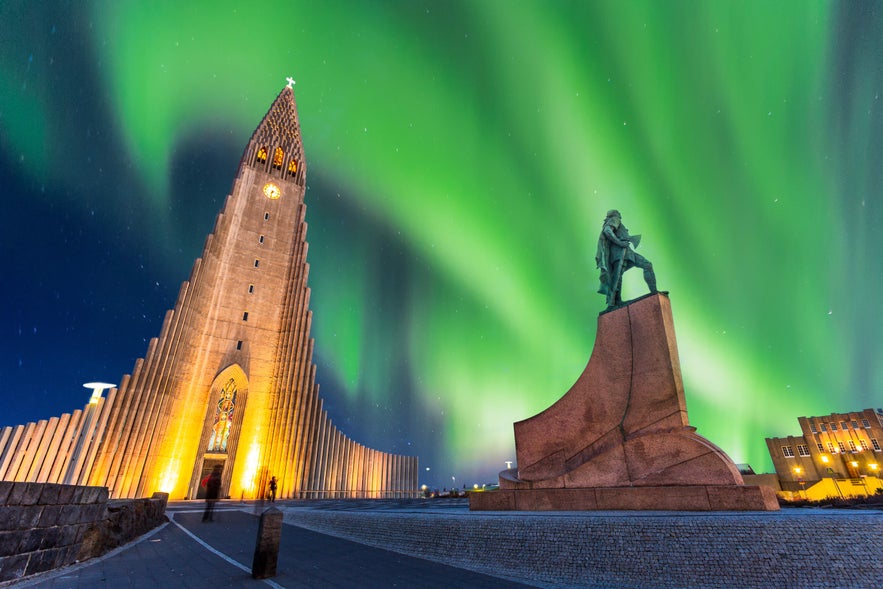
Anyone visiting Iceland in February needs to prepare for winter weather, and not just by packing warm clothes. If one of your tours is called off because of heavy snowfall and dangerous conditions, have alternative plans ready.
Fortunately, there's no shortage of fun things to do in Reykjavik in February, even on rainy afternoons. From the best affordable activities in Reykjavik to easy navigation via Reykjavik City Buses, you can spend an entire day in the capital and still find more to do the next day.
Join Walking Tours Led by Locals
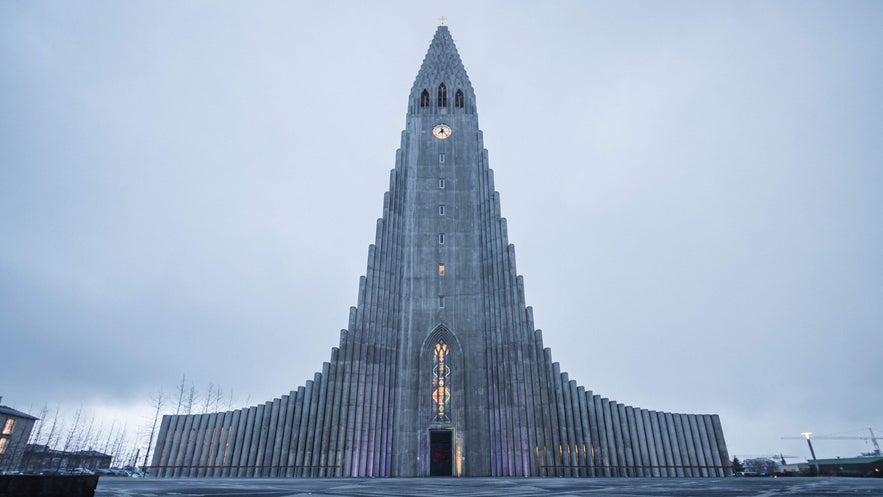 Taking walking tours in Reykjavik in February is one of the best ways to experience the city's history and daily life. To make it more fun, you can also join a Viking walking tour. Despite the cold, guided walking tours are comfortably paced and allow you to warm up indoors between stops.
Taking walking tours in Reykjavik in February is one of the best ways to experience the city's history and daily life. To make it more fun, you can also join a Viking walking tour. Despite the cold, guided walking tours are comfortably paced and allow you to warm up indoors between stops.
You can explore landmarks like the Hallgrimskirkja Church, Harpa Concert Hall, and the Old Harbour while learning about Iceland's Viking roots and modern culture.
Icelandic Restaurants Sure to Please the Palate
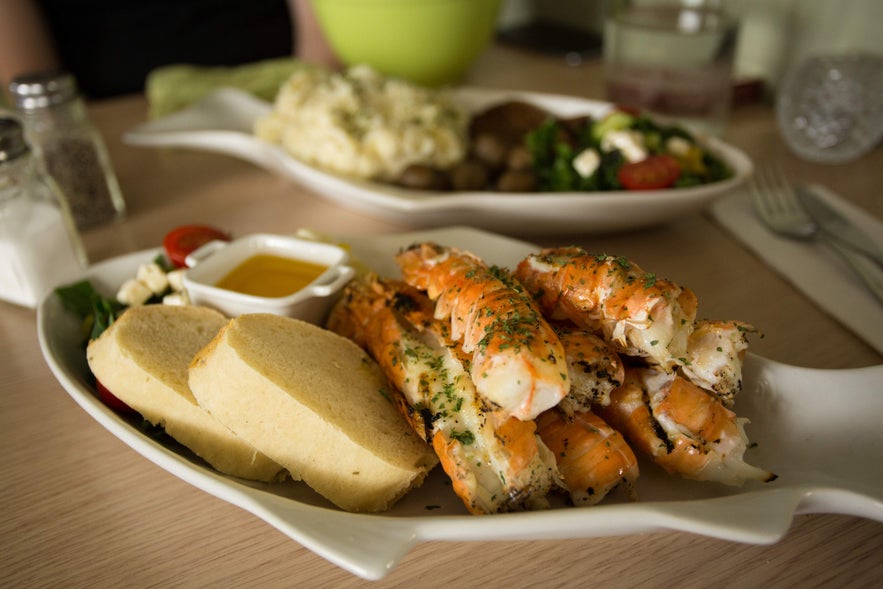 The coldness of Iceland in February makes warm meals even more satisfying, and the top restaurants in Reykjavik excel in crafting delicious seasonal dishes. Choose from numerous top-rated restaurants that reflect traditional Nordic flavors and global cuisines.
The coldness of Iceland in February makes warm meals even more satisfying, and the top restaurants in Reykjavik excel in crafting delicious seasonal dishes. Choose from numerous top-rated restaurants that reflect traditional Nordic flavors and global cuisines.
Visit Sjavargrillid for a divine seafood lunch, or dine at Fjallkonan for unique dishes. Afterward, you can explore some of the best bars for craft beer in Reykjavik to round out your evening.
Enjoy Icelandic Coffee Culture
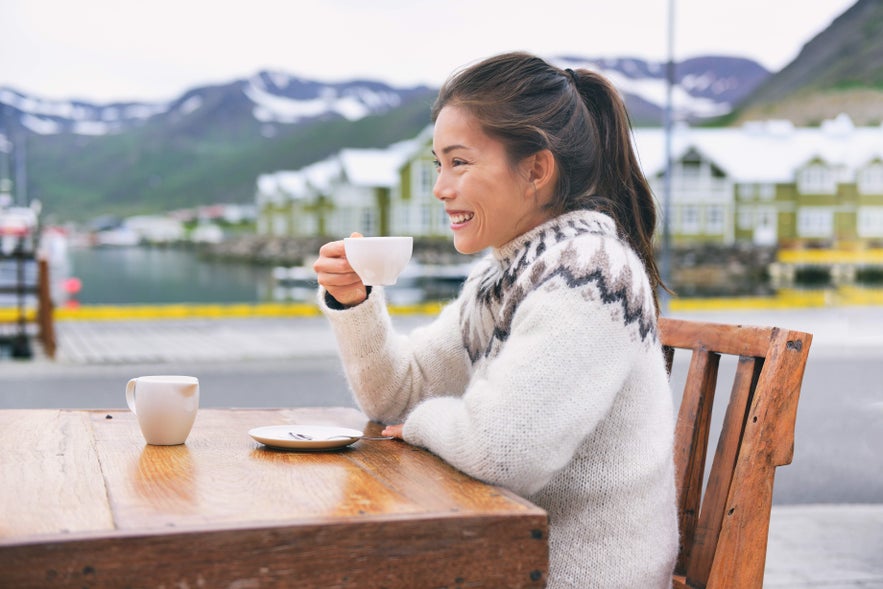 Reykjavik's cafes are ideal for escaping the February chill while enjoying Icelandic coffee culture. Popular cafes such as Reykjavik Roasters and Cafe Babalu offer freshly brewed coffee, homemade pastries, and a cozy atmosphere that feels welcoming on snowy days.
Reykjavik's cafes are ideal for escaping the February chill while enjoying Icelandic coffee culture. Popular cafes such as Reykjavik Roasters and Cafe Babalu offer freshly brewed coffee, homemade pastries, and a cozy atmosphere that feels welcoming on snowy days.
The weather in Iceland in February often encourages slow and cozy afternoons, making cafes the perfect stop between sightseeing adventures. You can also sample treats from the best bakeries in Reykjavik.
Visit Iceland's Top Museums
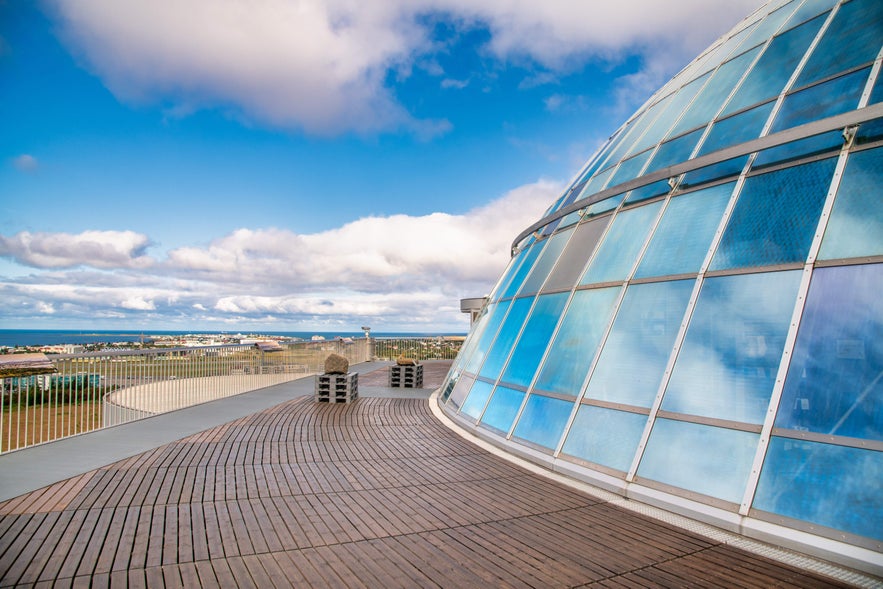 Museums in Reykjavik offer warm and engaging indoor experiences that are perfect in February. The city is home to many of the top museums in Reykjavik, like the National Museum of Iceland which provides an in-depth look at the country's history, from Viking settlement to modern times.
Museums in Reykjavik offer warm and engaging indoor experiences that are perfect in February. The city is home to many of the top museums in Reykjavik, like the National Museum of Iceland which provides an in-depth look at the country's history, from Viking settlement to modern times.
The Perlan Museum, located in a landmark dome building, offers interactive exhibits on Icelandic nature, glaciers, and volcanoes, ideal for families and curious travelers alike. Art lovers will also find plenty to enjoy at the top art museums in Reykjavik, featuring contemporary and classical Icelandic works.
Family Activities in Iceland Everyone Can Enjoy
 Not sure what to do with young kids in the Reykjavik area? There are many family-friendly things to do in the capital.
Not sure what to do with young kids in the Reykjavik area? There are many family-friendly things to do in the capital.
Laugardalslaug, a geothermal swimming pool in the Laugardalur area, offers warm outdoor baths and children's pools. The Whales of Iceland museum features life-sized whale models and interactive exhibits for children and adults alike.
Shop To Find Iceland's Treasures
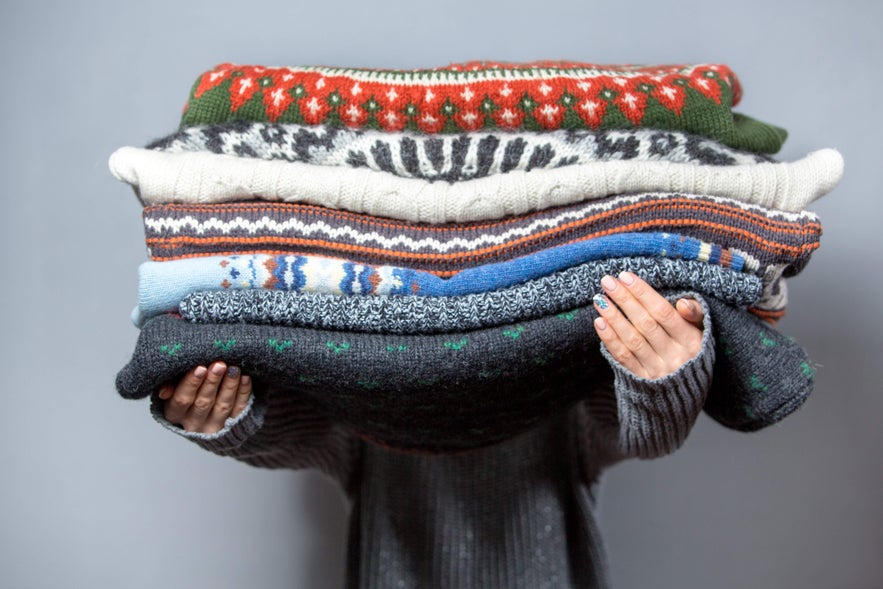 When you need a break from outdoor adventures, shopping is one of the top things to do in Iceland in February. Local shops offer high-quality Icelandic wool products, including sweaters and hats to keep you warm.
When you need a break from outdoor adventures, shopping is one of the top things to do in Iceland in February. Local shops offer high-quality Icelandic wool products, including sweaters and hats to keep you warm.
You'll find boutiques selling knitwear, lava jewelry, skincare products made with volcanic minerals, and local art. Exploring the top shops in Reykjavik, including its shopping streets helps you find unique souvenirs and support local artisans.
Suggested Itineraries for Iceland in February
 Now that you know what to expect when touring Iceland in February, here are a couple of hand-picked itineraries to help you make the most of your stay. These suggestions are based on the number of days you have in Iceland and can be amended to suit your tastes, plans, and budget.
Now that you know what to expect when touring Iceland in February, here are a couple of hand-picked itineraries to help you make the most of your stay. These suggestions are based on the number of days you have in Iceland and can be amended to suit your tastes, plans, and budget.
The Stopover Traveler Itinerary (4 Days)
The four-day stopover itinerary begins with arrival in Iceland and taking an airport transfer bus from Keflavik International Airport to the Blue Lagoon. You can book your Blue Lagoon comfort ticket with transfer from the airport and then to Reykjavik.
Soak in the azure waters to unwind from your flight. After relaxation and a silica mask, head to your Reykjavik hotel and settle in. You'll have time to wander the city and take in the sights before visiting a restaurant.
Since you only have a few days, make the most of your time. Book a two-day tour across the South Coast to see the region's many sites and explore an ice cave. Wake up early on day two to meet your guide, hop into the minibus, and start the tour.
You'll see South Iceland's great sites: majestic waterfalls, otherworldly black sand beaches, and the spectacular Jokulsarlon Glacier Lagoon. As you reach this final destination later in the day, you'll hunt for the northern lights while admiring the glacier lagoon.
Watching the northern lights dance above the Jokulsarlon Glacier Lagoon in greens, blues, purples, and reds is one of the most breathtaking sights you can behold.
The next morning, guides will take you to the Vatnajokull Glacier to explore the ice caves. Venturing through tunnels of ethereal blue ice is likely to be your holiday's highlight.
After marveling at one of nature's greatest wonders, you'll head back along the South Coast to Reykjavik. Once you return to the capital, check back into your hotel and enjoy the city's nightlife.
If your flight departs in the afternoon, you'll also have time for a quick morning tour. We recommend this horseback ride through beautiful lava fields.
After this authentic Icelandic adventure, catch a Flybus shuttle back to the airport to end your short but rewarding holiday to Iceland in February. If you can stay another day, consider this minibus tour of the Golden Circle.
The Getaway Traveler Itinerary (10+ Days)
The getaway traveler itinerary requires a minimum of 10 days to fully immerse yourself in February's winter landscapes. We recommend this 10-day Ring Road of Iceland self-drive tour or this 10-day South Coast and Snaefellsnes Peninsula self-drive tour. Both itineraries let you explore highlights of Iceland's landscape at your own pace.
If you have little experience driving on icy roads, choose from the selection of vacation packages and guided tours. Two popular packages are:
-
A 9-day minibus tour of the Ring Road, including the Eastfjords and Lake Myvatn
-
A 10-day tour that immerses you in the south, along with the Landmannalaugar Geothermal Area and the Snaefellsnes Peninsula
The getaway traveler should aim to see northern sites like Lake Myvatn without missing the Snaefellsnes Peninsula. Buying a package is the easiest way to organize your trip and ensure you make the most of your visit to Iceland in February.
FAQs About Visiting Iceland in February
February is one of Iceland’s most rewarding winter months, offering a mix of dramatic landscapes, northern lights opportunities, and often, at lower prices. Whether you're planning a short stopover or a longer adventure, February is a fantastic time to explore Iceland at its most magical.
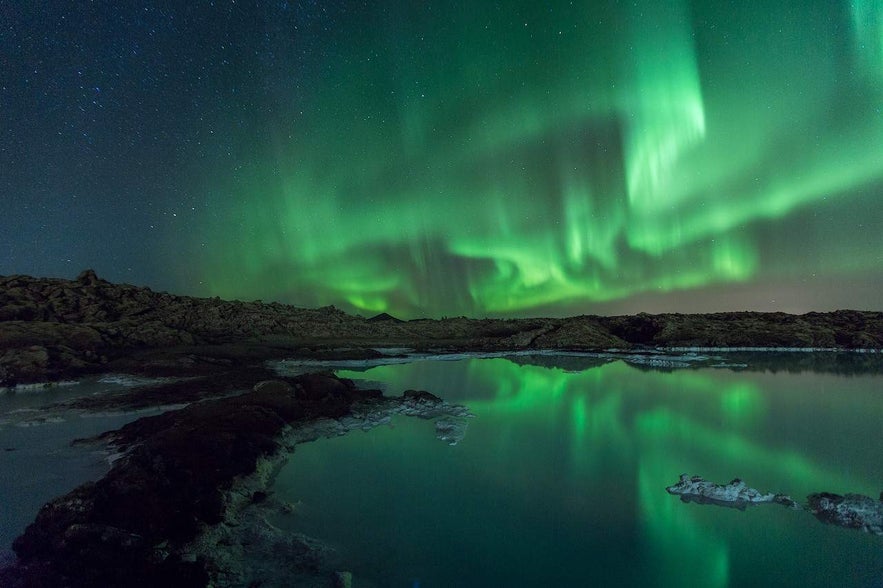
Is February a good time to visit Iceland?
Yes. February offers snowy landscapes, northern lights, and fewer crowds. Many winter tours, including ice caving and glacier hiking, are in peak season this month.
Is Iceland cheap in February?
Yes, February is generally cheaper than the peak summer months, with more affordable flights and accommodation options than in June–August.
Can you see the northern lights in February in Iceland?
Yes. February is one of the best months for northern lights due to long, dark nights. For higher chances, check the aurora forecast, get away from city lights, and consider a guided tour.
What should I pack for a February trip to Iceland?
Pack warm, waterproof winter gear, such as insulated boots, thermal layers, and windproof outerwear. Don’t forget a hat, scarf, gloves, a swimsuit for geothermal pools, and a dry suit base layer if you plan to snorkel in Silfra.
Are there any holidays in Iceland in February?
February in Iceland mostly includes cultural celebrations. The most notable are Thorrablot, a traditional mid-winter festival, and Konudagur (Women’s Day), celebrated in the latter half of the month. Other February holidays include the Winter Lights Festival in Reykjavik and Oskudagur, or Ash Wednesday.
Can you visit the Blue Lagoon in February?
Yes, the Blue Lagoon is open in February. It is open year-round, even when the outside temperature is below zero. Visiting the Blue Lagoon and swimming in its warm waters during winter is an incredible experience. This is also a great time for photography lovers to capture thick steam rising from the warm blue waters.
Ready to Experience Iceland in February?
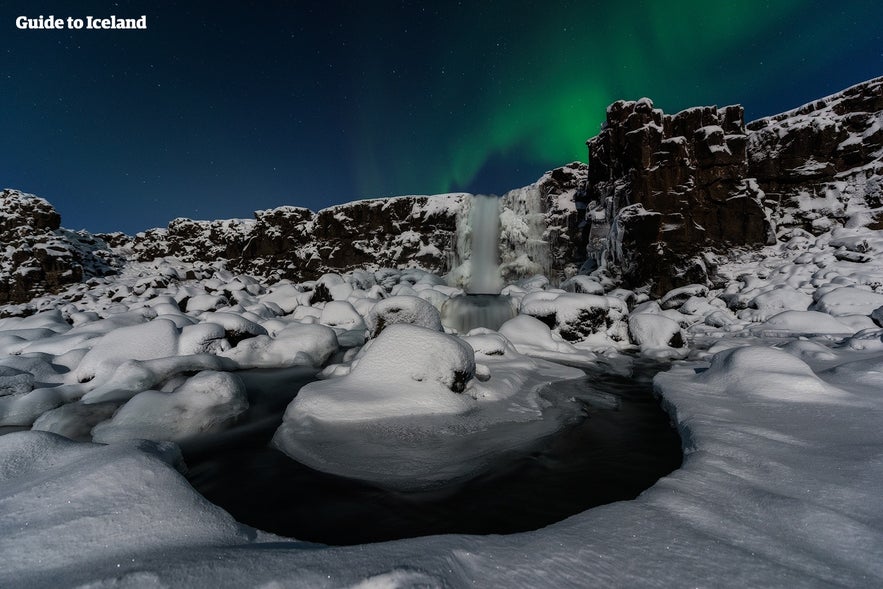
Although Iceland is cold and dark in February, it's a lovely place to visit, and the people are warm and welcoming. You can experience the growing balance between night and day, fewer crowds, and a wealth of winter activities.
Whether you're planning a stopover or a couple of weeks in Iceland in February, what would you most like to try? Have you visited Iceland in winter? We'd love to hear your thoughts in the comments below!


